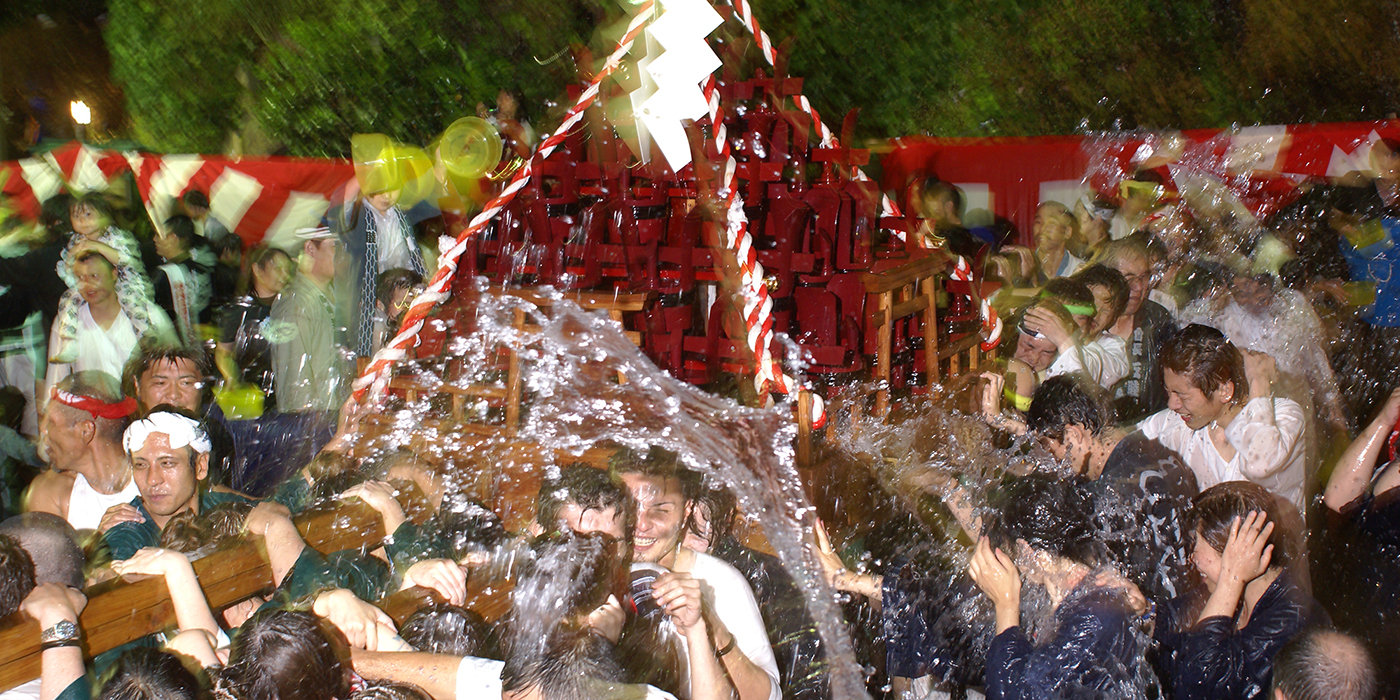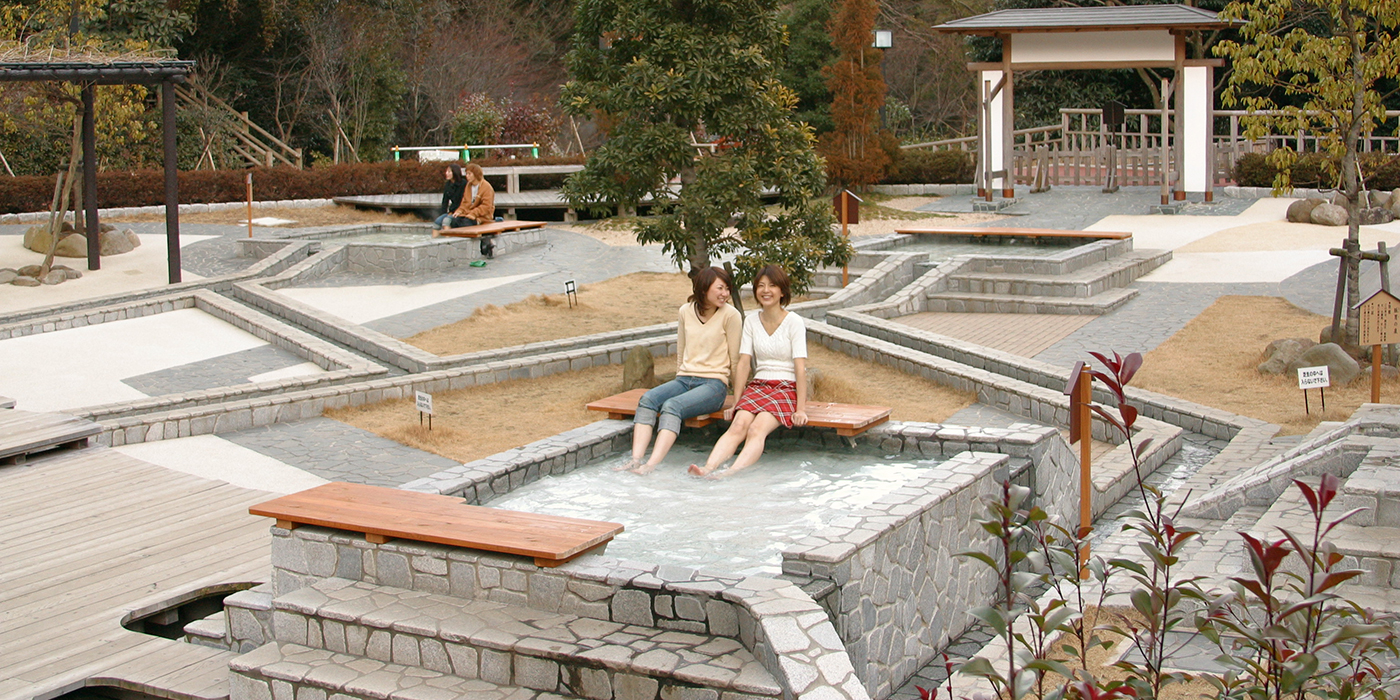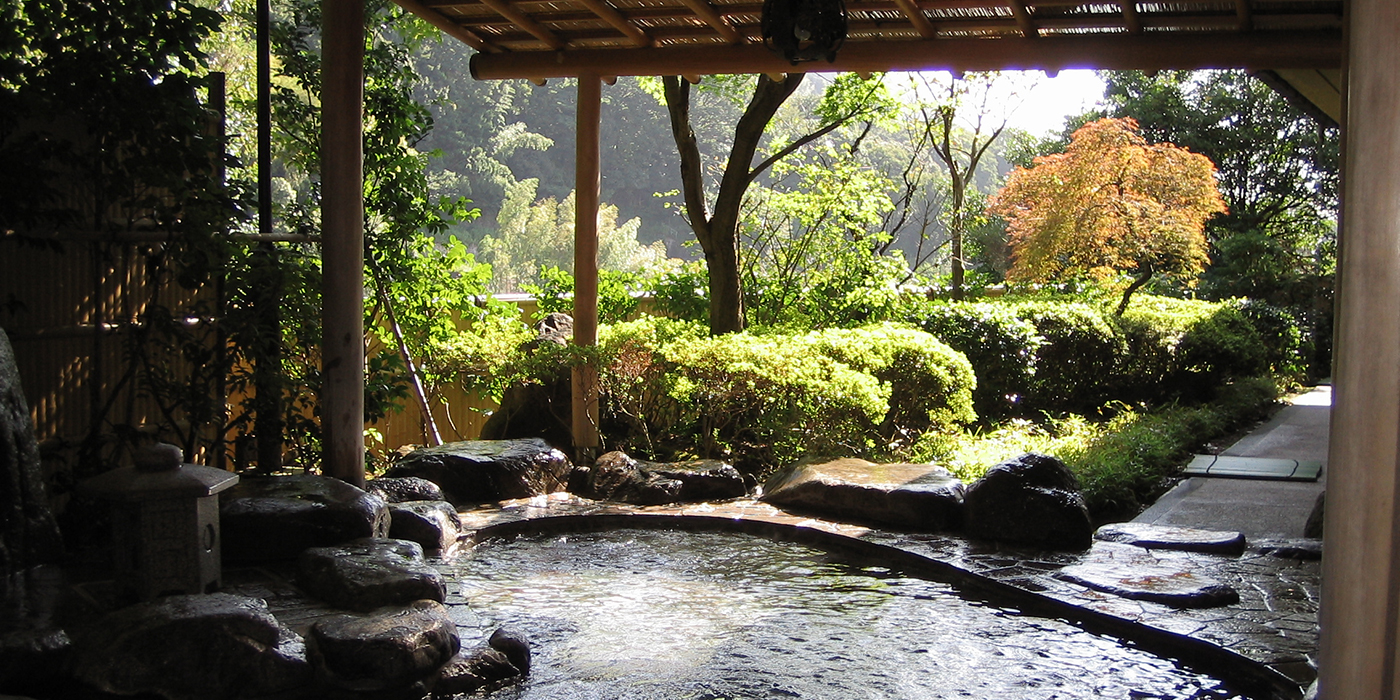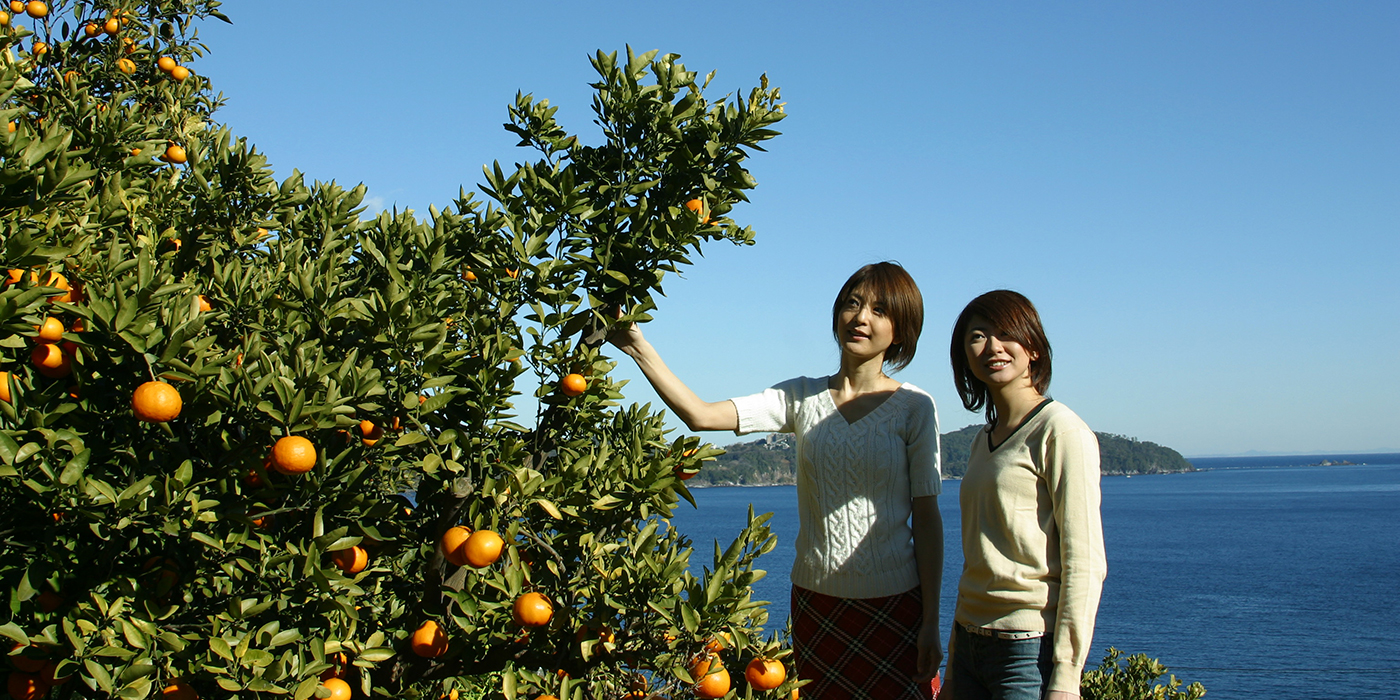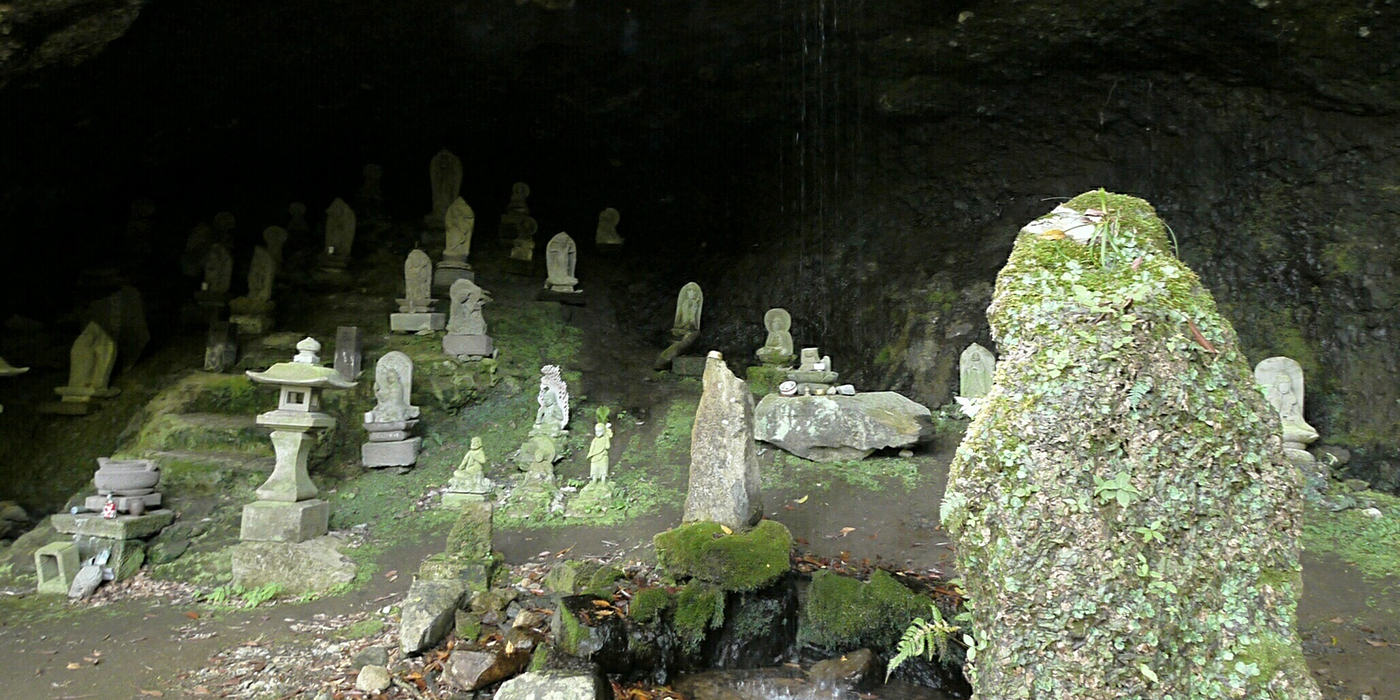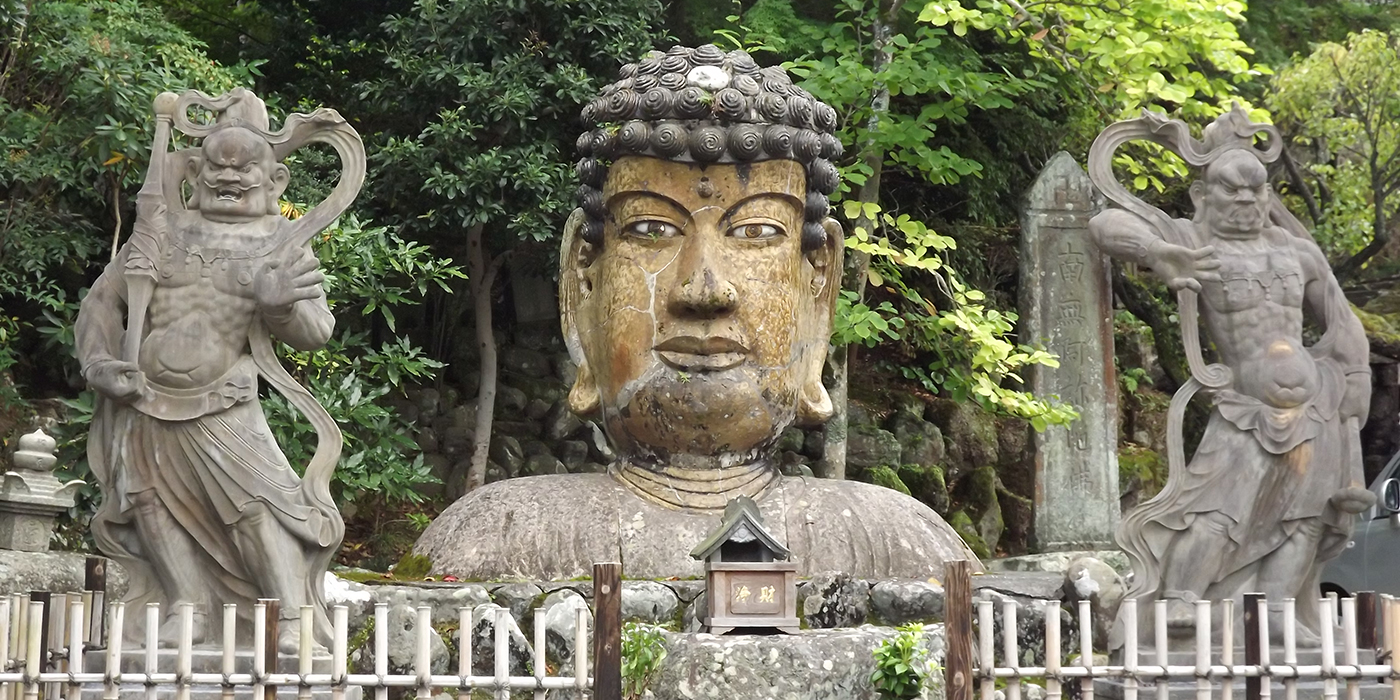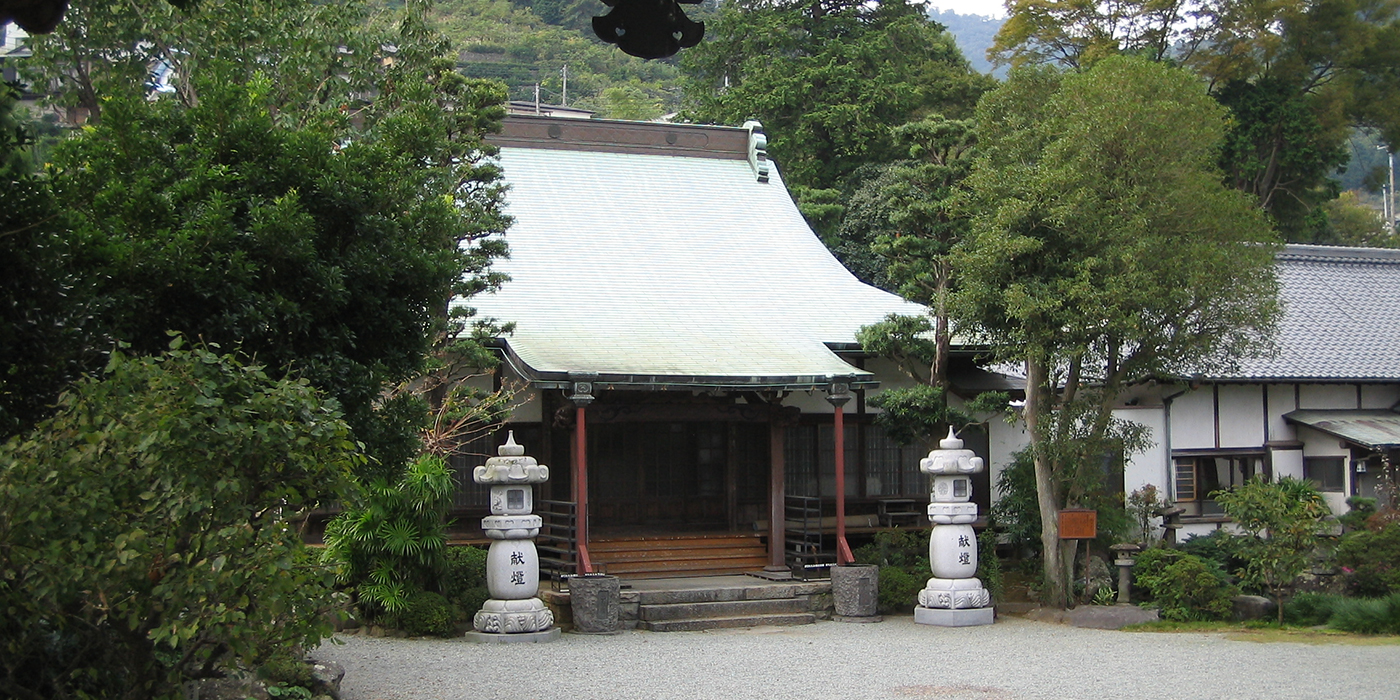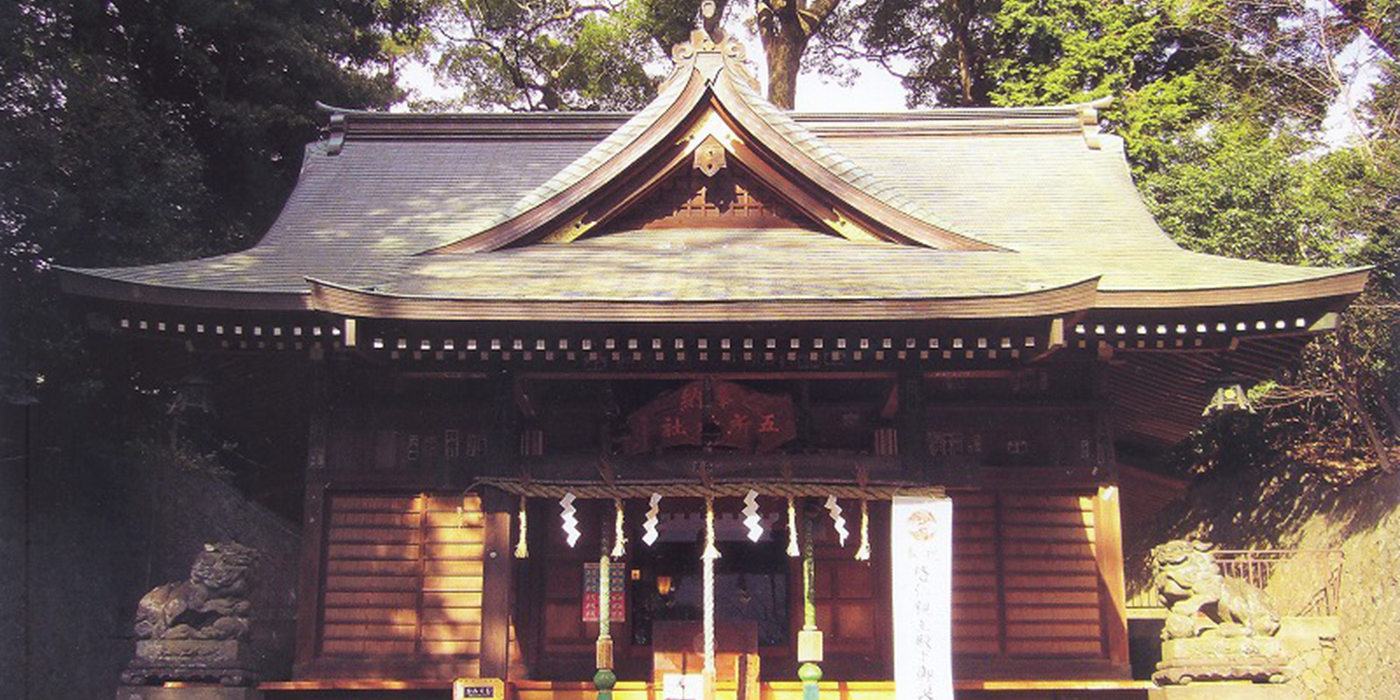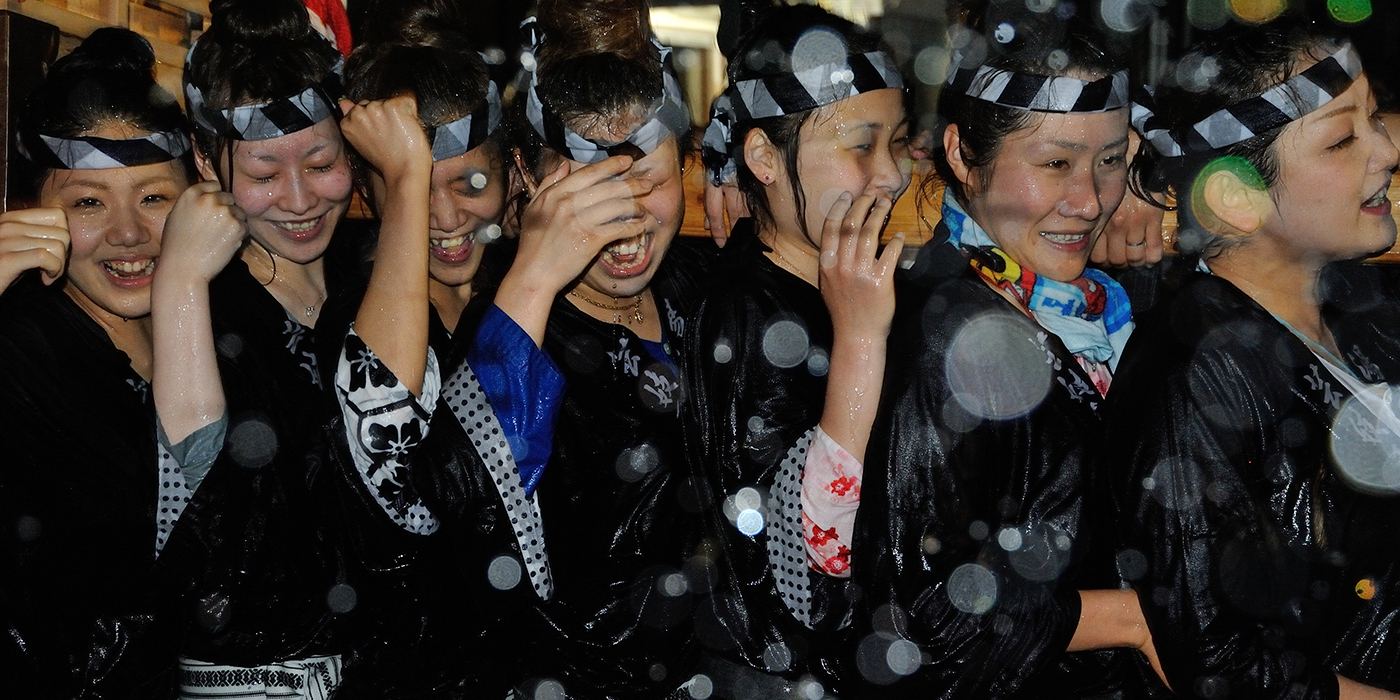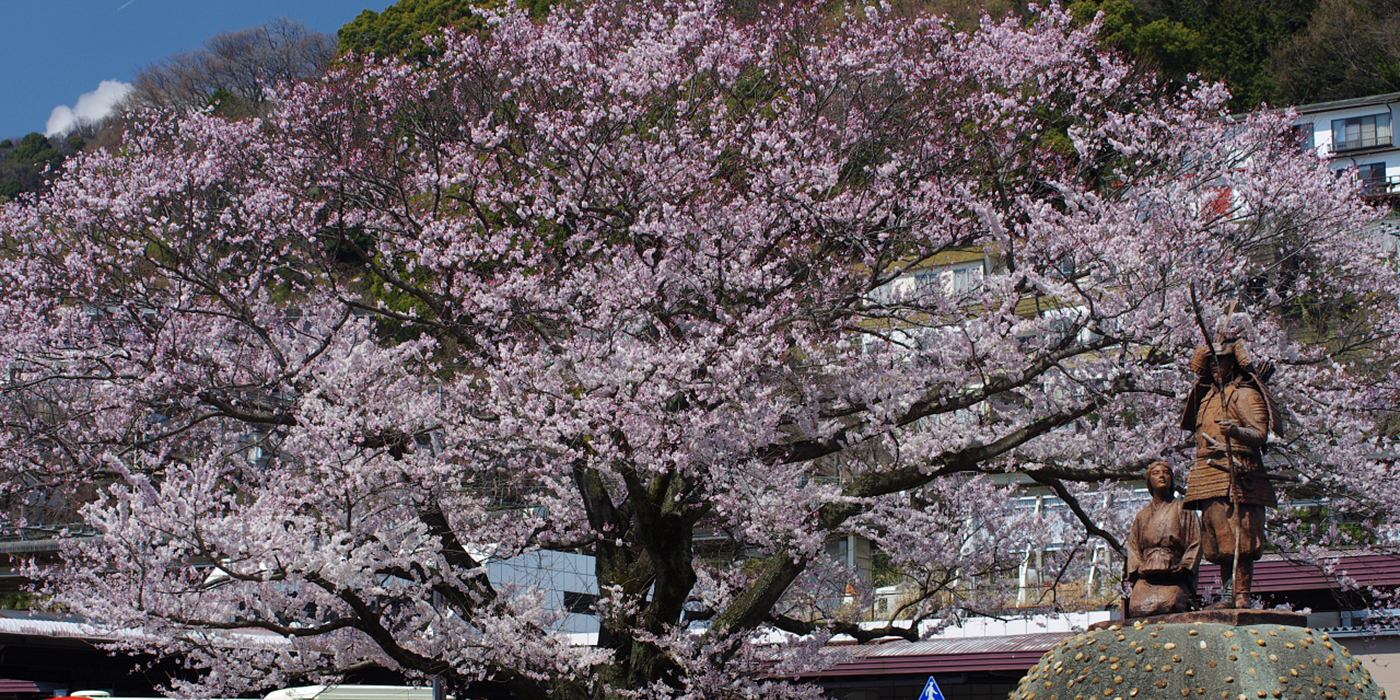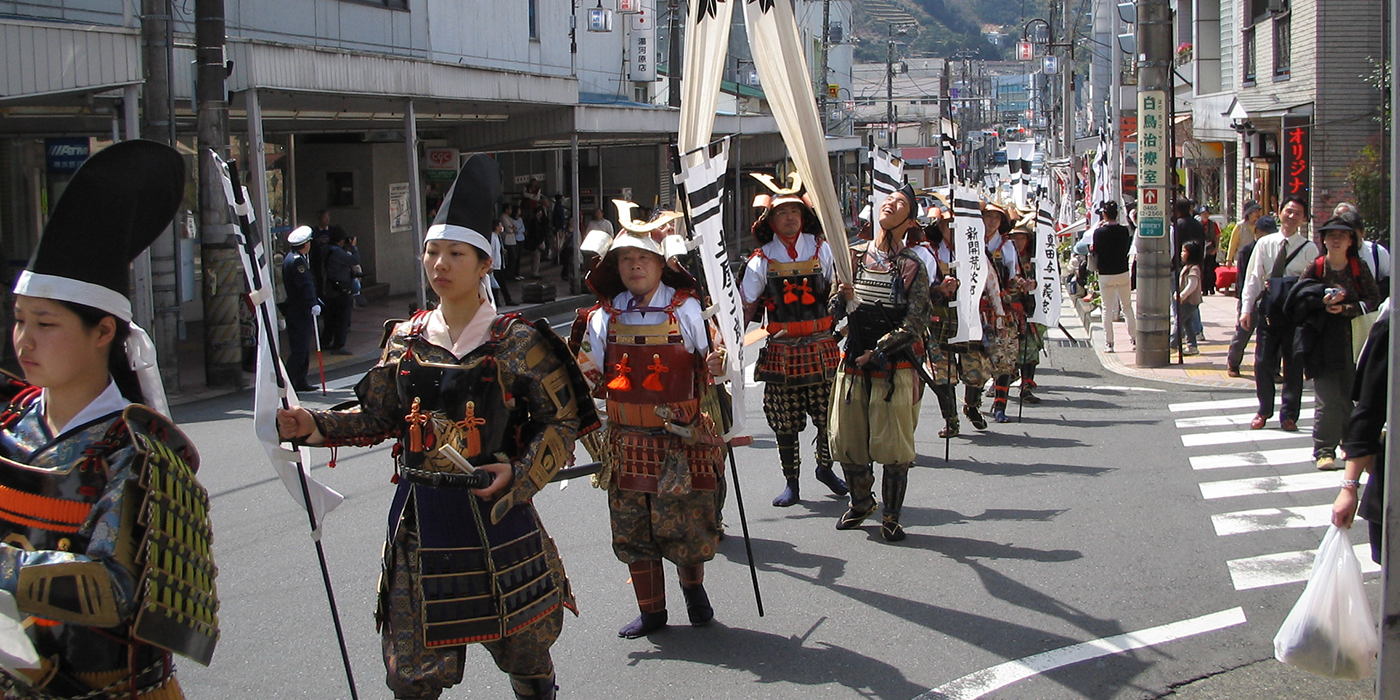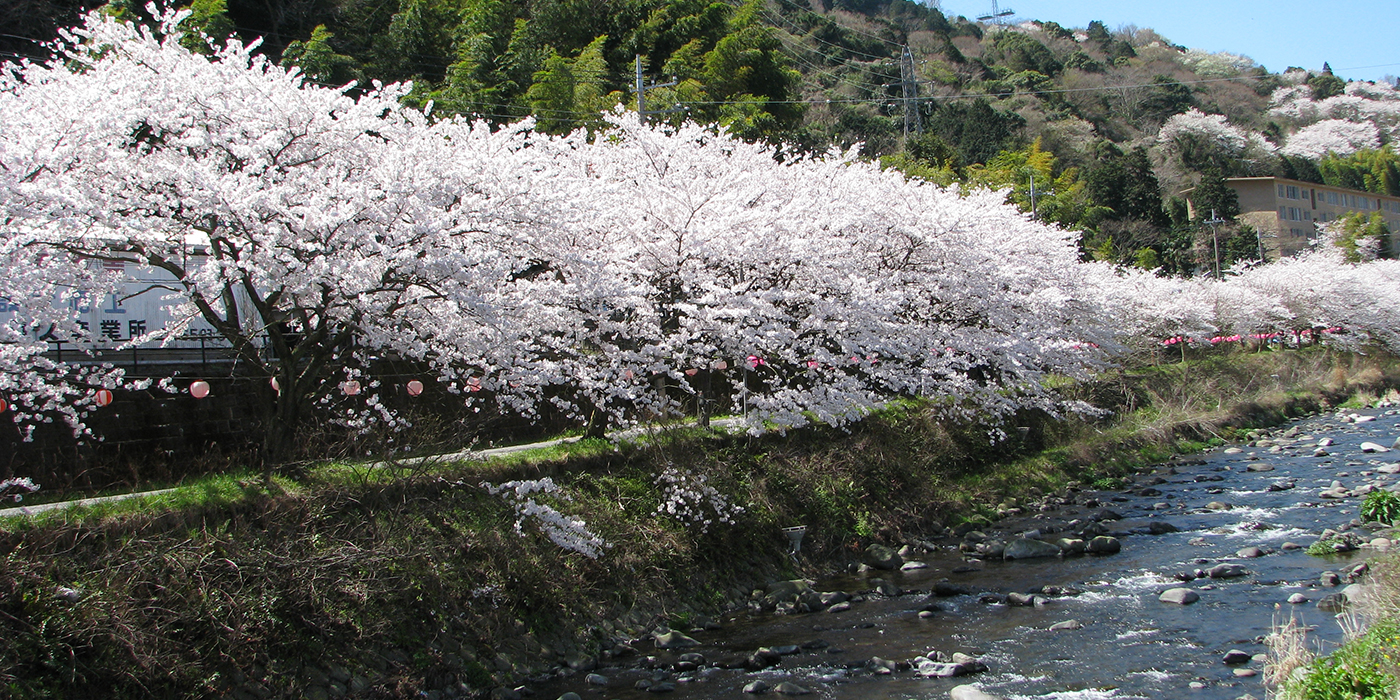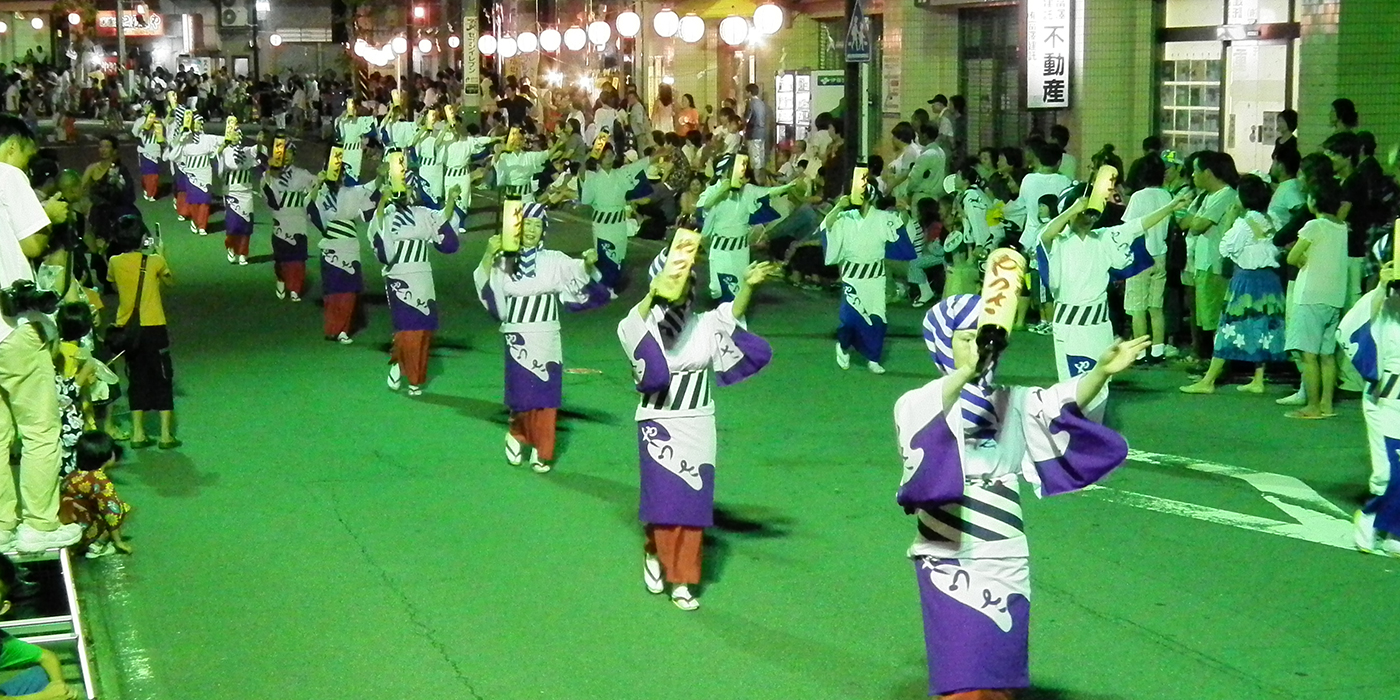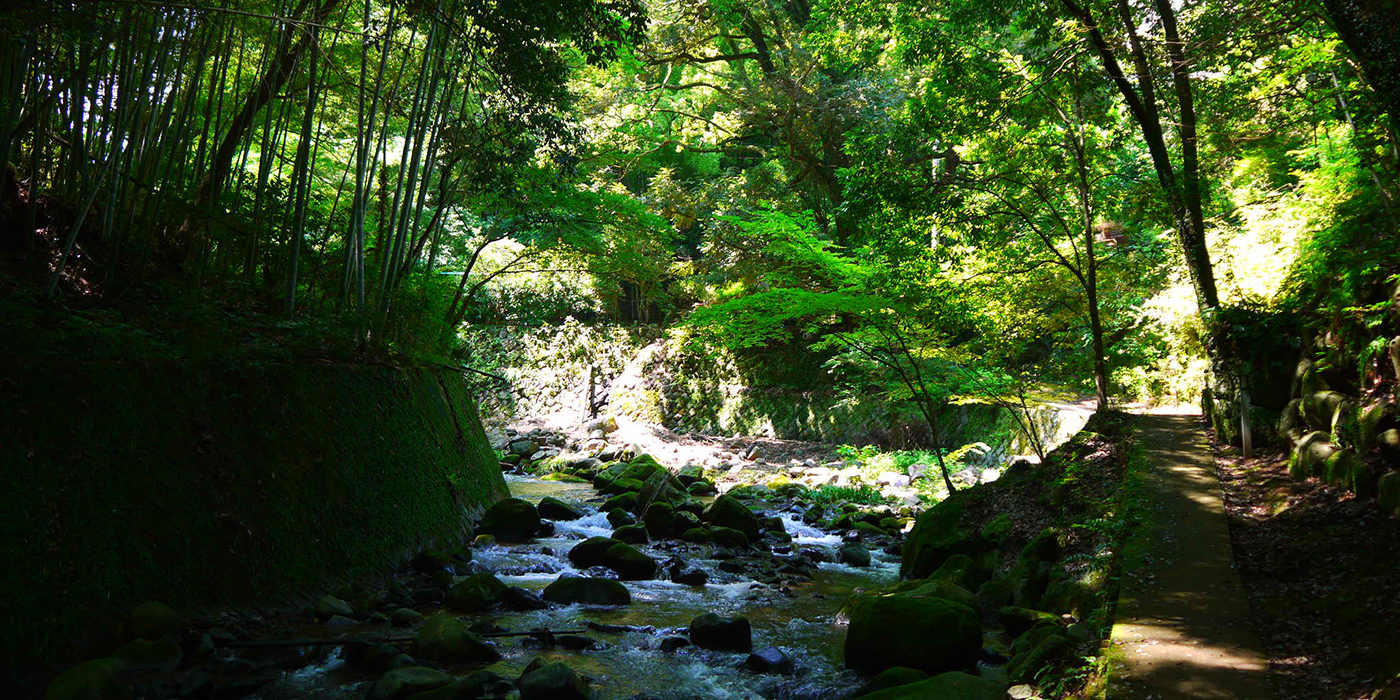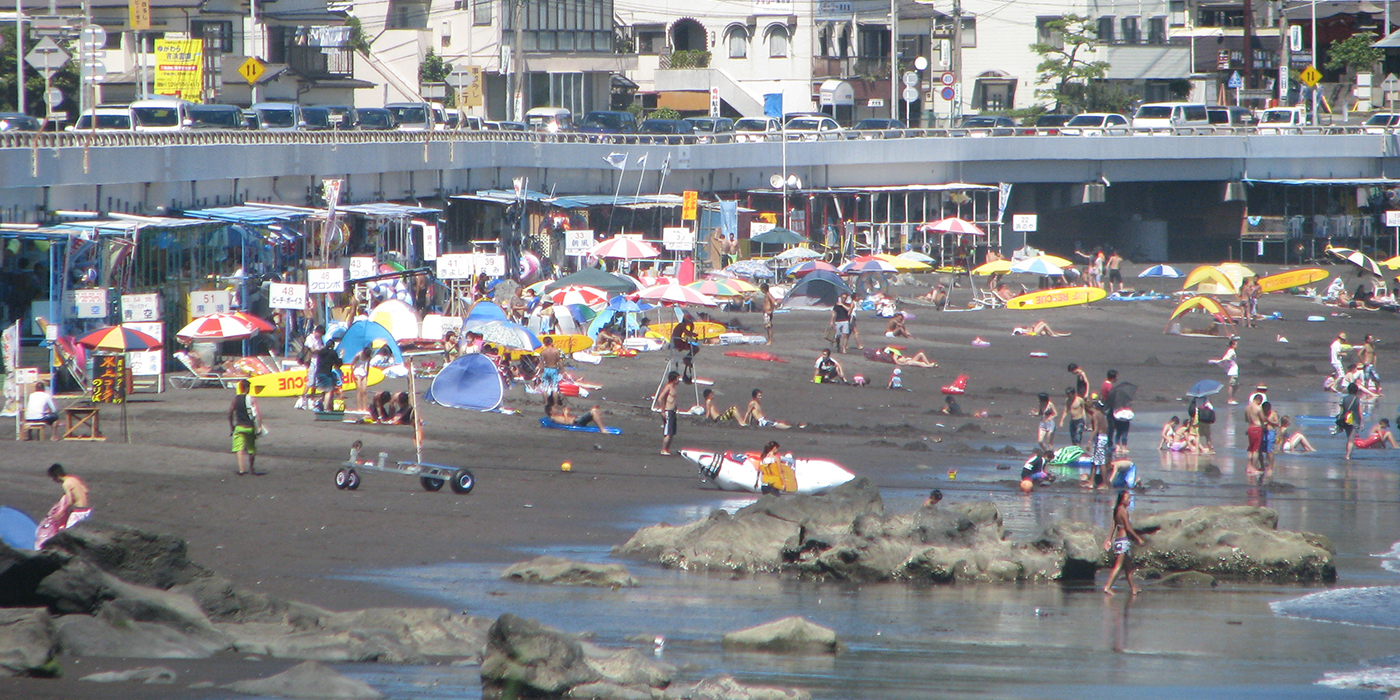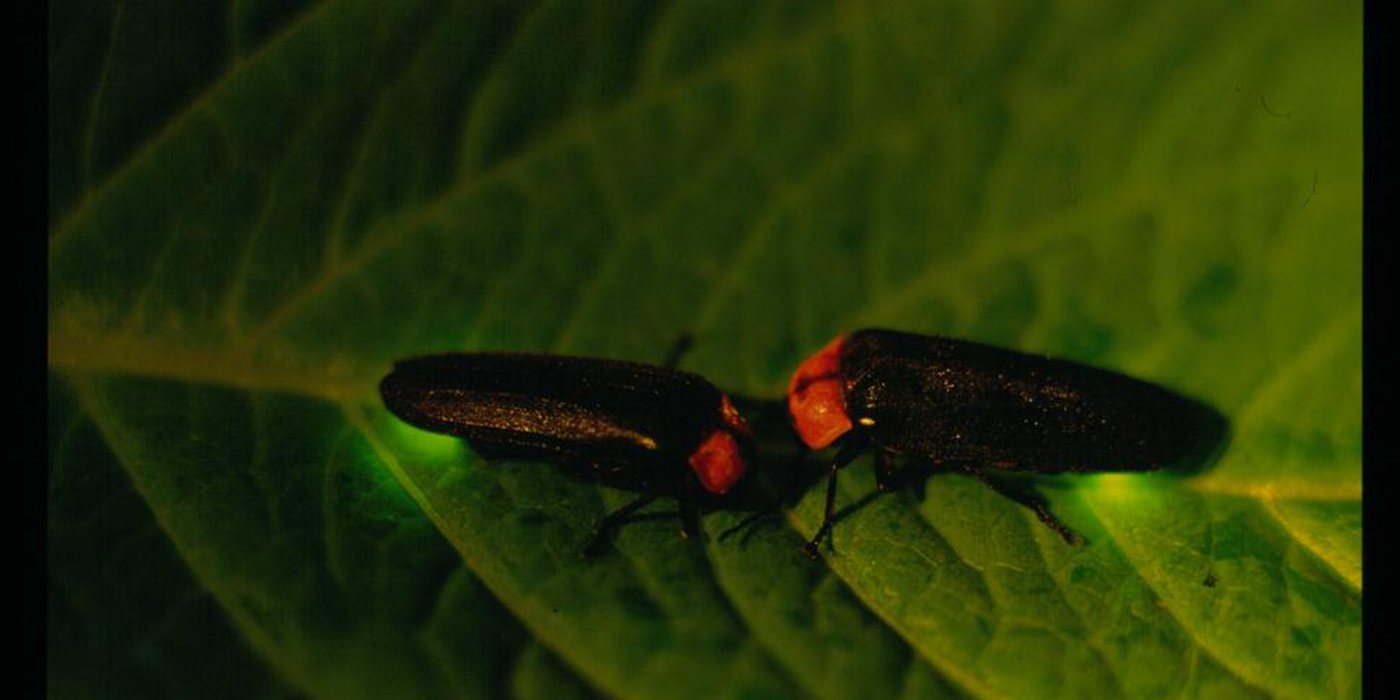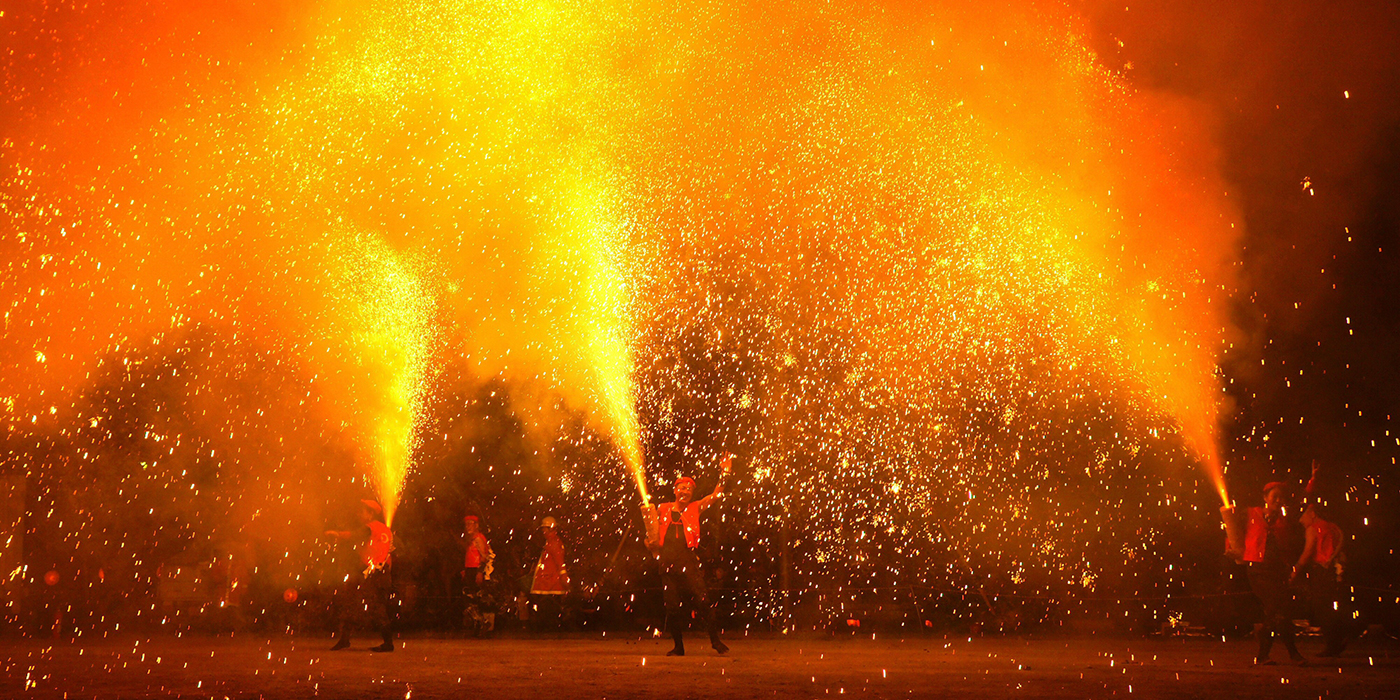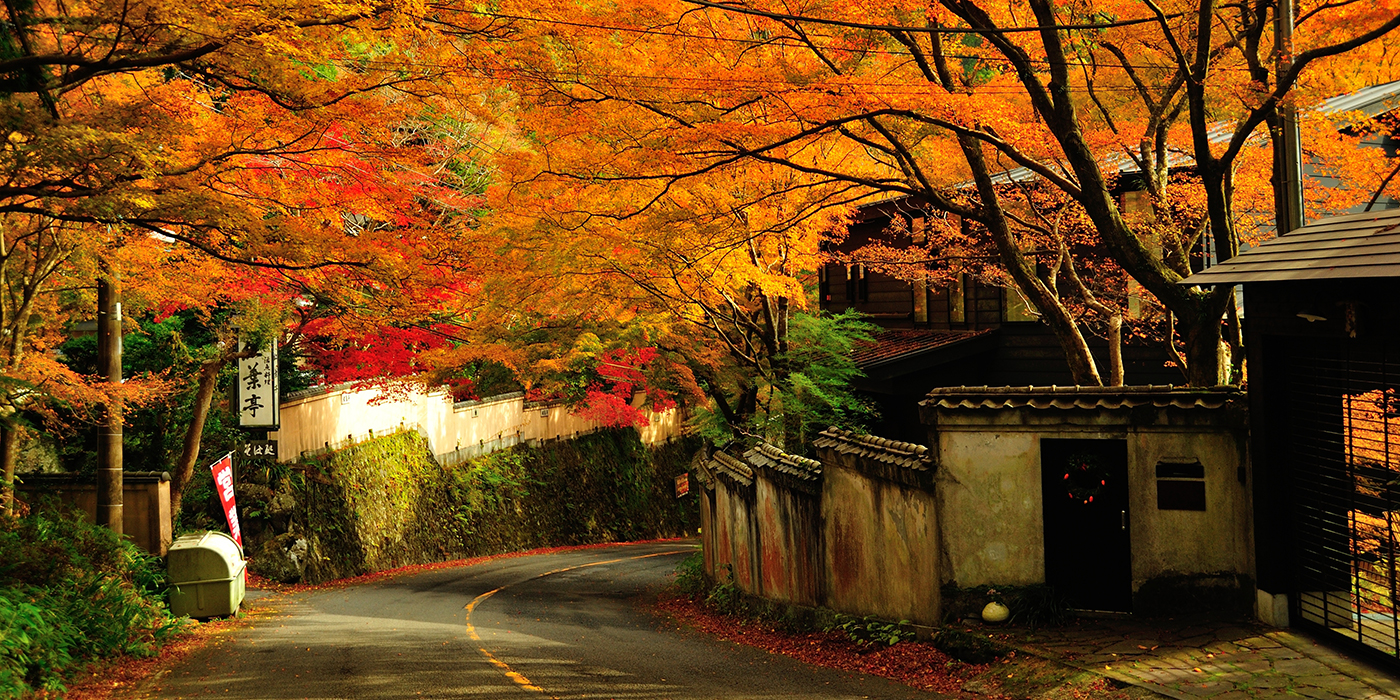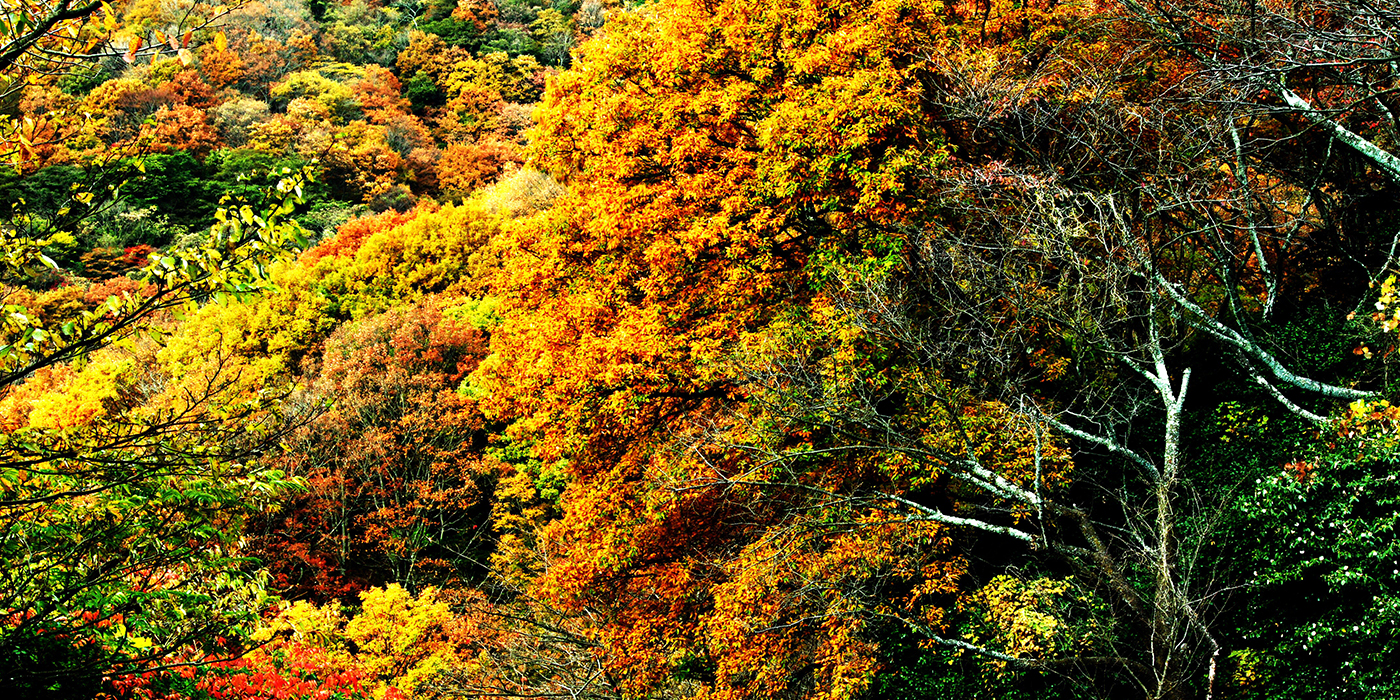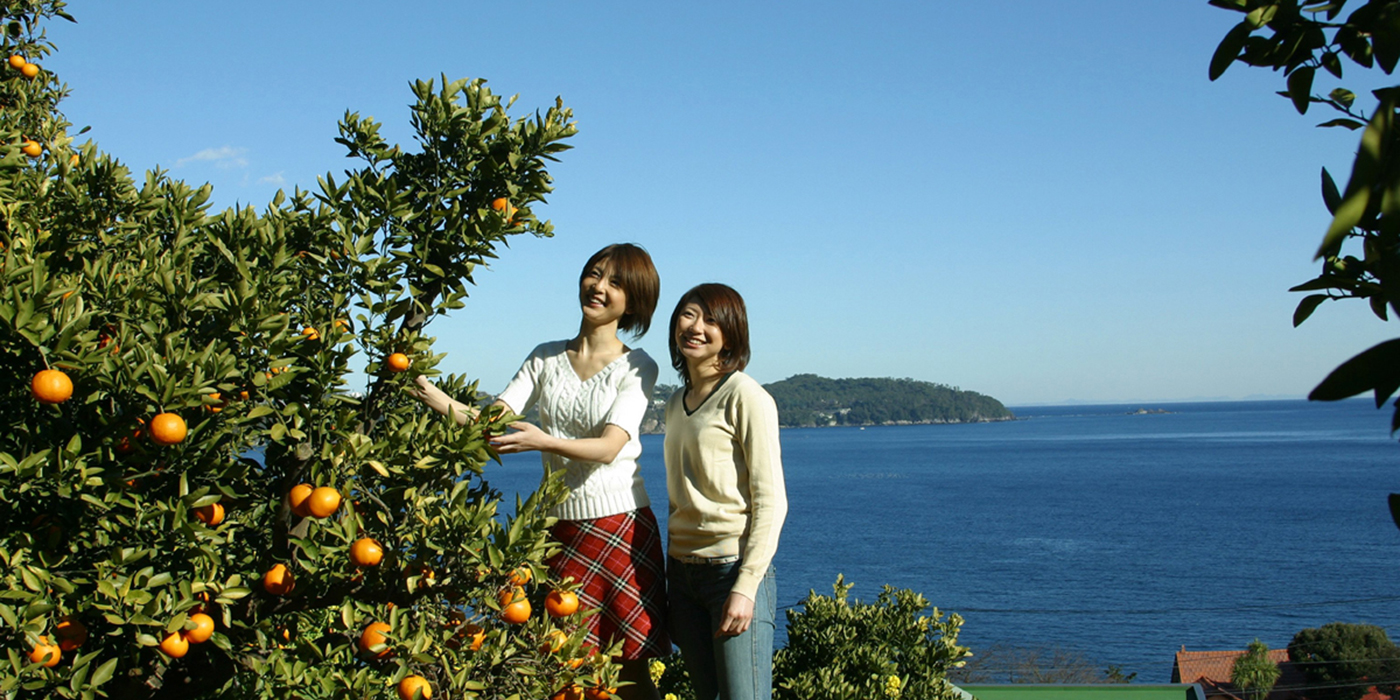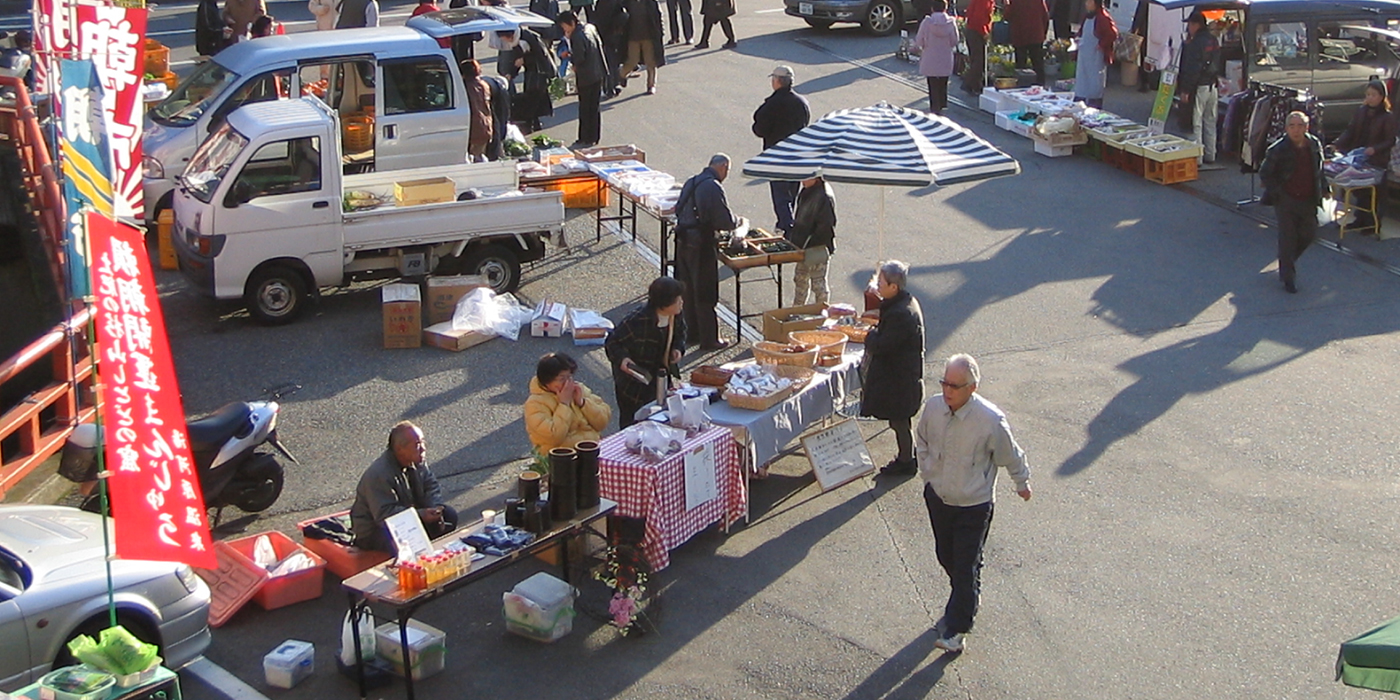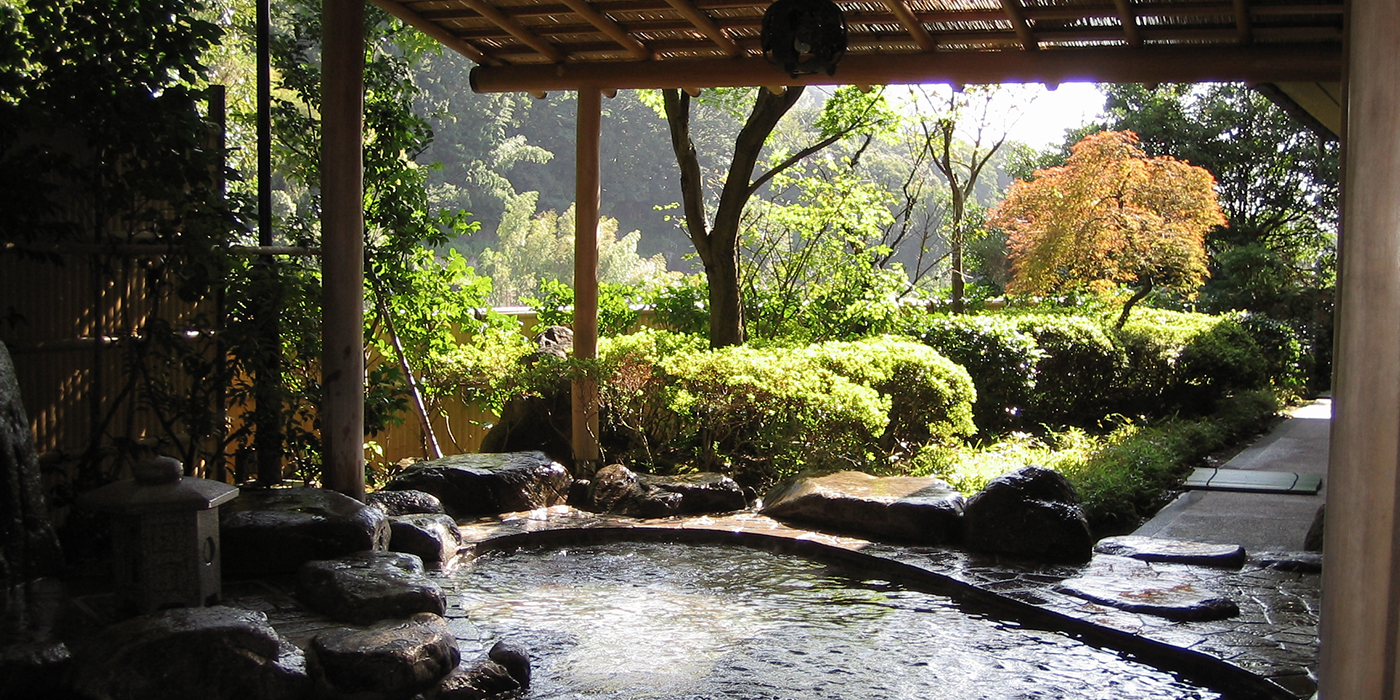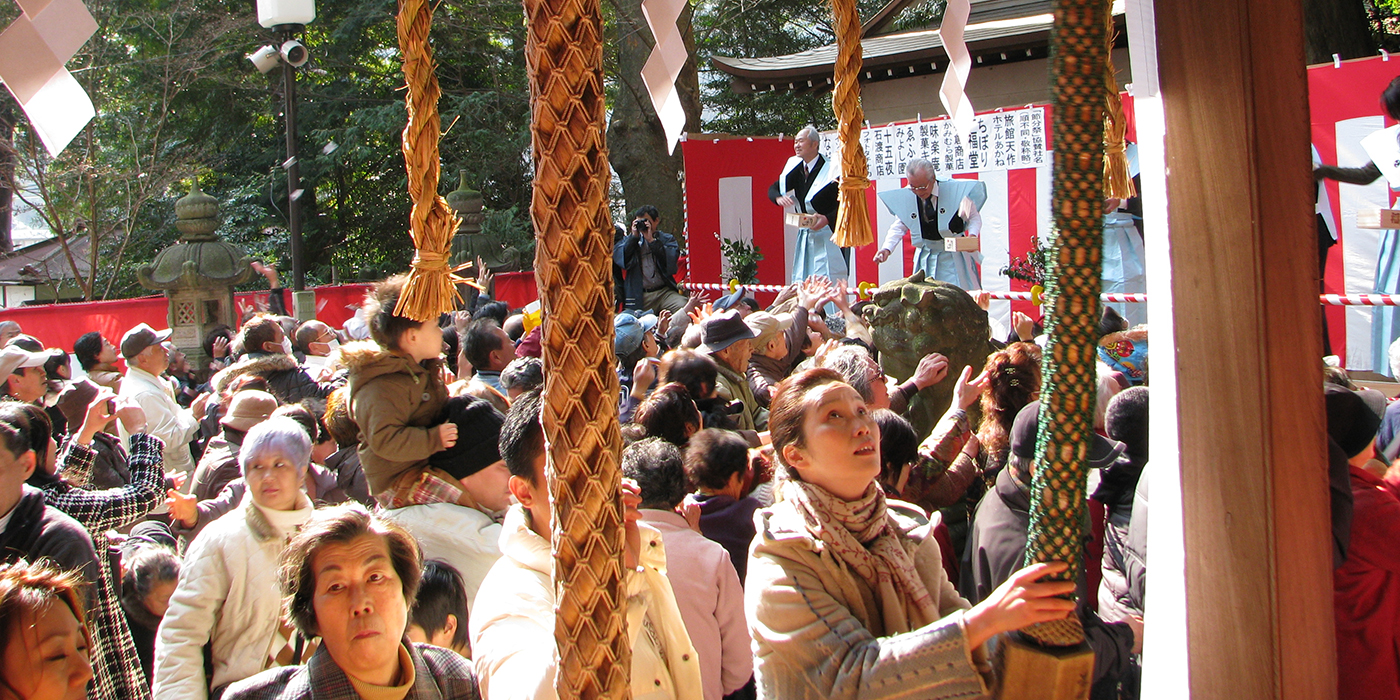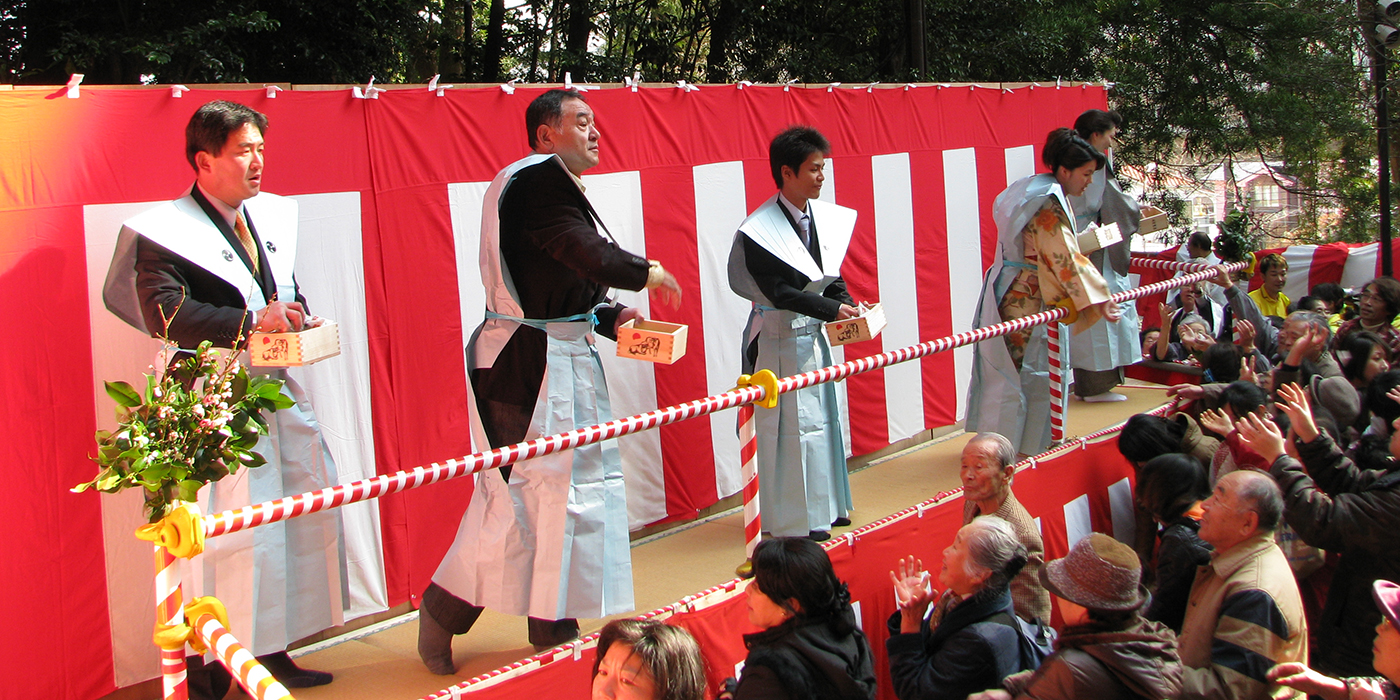What kind of place is Yugawara?
Yugawara is a prominent resort destination in Japan, and famous for being an onsen (hot springs) town. Nestled between mountains and the ocean, it is an area blessed with an abundance of nature’s wonders. Many renowned sightseeing areas, such as Mt. Fuji in all of its grandeur, Atami, Izu, Hakone, and Odawara are in close proximity to Yugawara’s own attractions.
People travel from far and wide to bathe in Yugawara's rejuvenating hot springs, which are well-known for their properties of healing and promoting good health, and have been treasured since ancient times. There are also footbaths called "ashiyu," where you soak only your feet in the soothing onsen waters. Such facilities are often free, and very popular among visitors.
One of Yugawara's main specialties is its famous mikan oranges, which are similar to tangerines. Around November they can be seen growing all over town. When they are in season, you can go mikan-picking yourself at an orchard, or you can buy them already freshly-picked from shops and stalls around town.
There are a variety of traditional and seasonal events to experience, including a summer fireworks display and Halloween, among many others. One lively festival unique to Yugawara as a hot springs town is the "Yukake-Matsuri," during which “mikoshi” (portable shrines) carried by groups of townspeople are splashed with hot spring water as they parade through the streets of Yugawara. It is an event beloved both by Japanese people and overseas visitors.
As Yugawara is a hot springs town, you can bathe in the onsen waters at most of the available accommodations, of which there is no shortage to choose from.
Moreover, since Sagami Bay is within walking distance, there are many restaurants and ryokan (Japanese-style inns) where you can dine on sushi, sashimi, and other meals made with fresh fish and shellfish. It is a great location for marine sports, fishing, diving, and other activities as well.
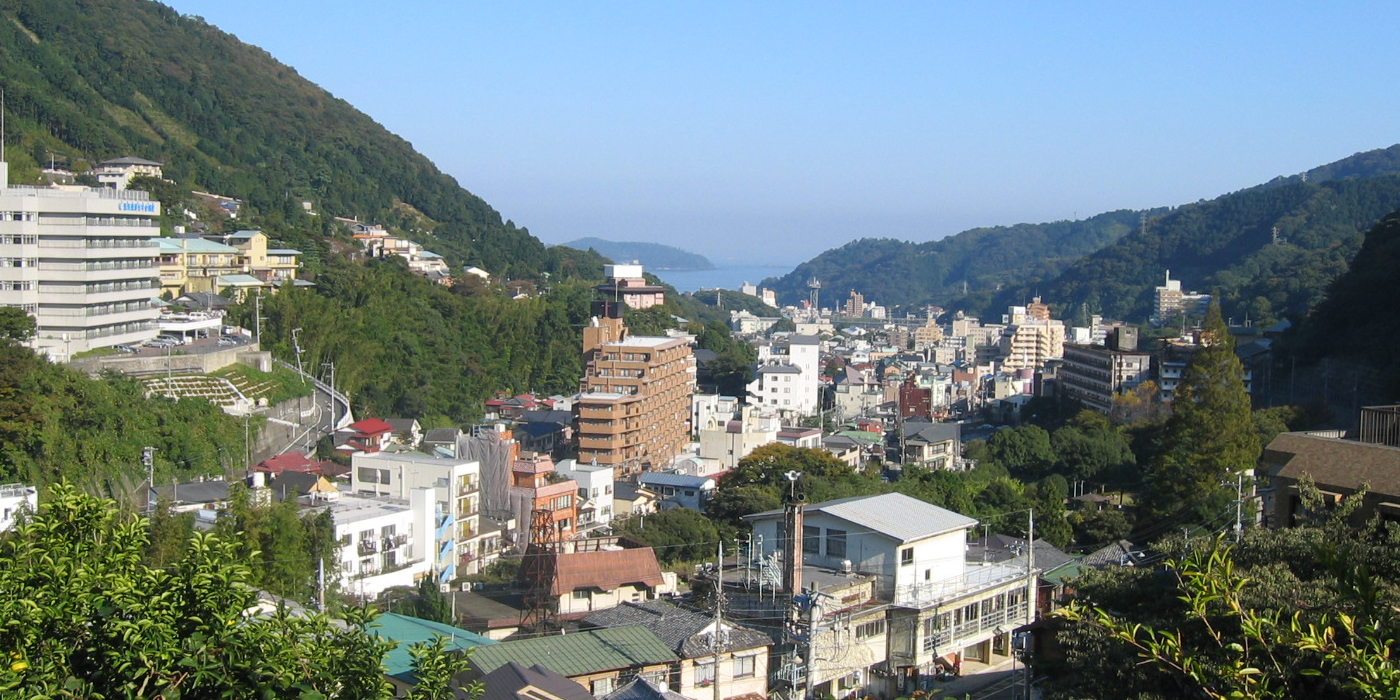
Favorable access from Tokyo Station
Yugawara is located on the farthest southwestern edge of Kanagawa Prefecture, which borders Tokyo to the northeast and Shizuoka Prefecture to the southwest.
From Tokyo Station, a one-hour ride on the Shinkansen, or 1.5 - 2 hours on other trains, will bring you to Yugawara Station much more quickly and directly than you might expect!
From Yugawara Station, many shops and restaurants are located in close proximity, and you can easily use taxis or buses to get to your hotel or inn, sightseeing spots, and other destinations.
Click for more Access informationHistory of Yugawara
The area around Yugawara Town was governed by a general called Sanehira Jiro Doi, who served Minamoto no Yoritomo, the first shogun of the Kamakura era (1185 ~ 1333). Even now, Yugawara is dotted with ancient relics, historical museums housing artifacts and artworks, and other points of interest concerning the area's past roots. Going further back in time, in the Manyoshu, Japan's oldest anthology of waka poems compiled during the Nara era (710 ~ 794), there is a poem that describes hot spring water gushing out in Yugawara. It is the only onsen described and specifically mentioned by name in this collection of 4,500 poems, evidence that Yugawara's reputation and popularity as a hot spring resort has endured for centuries.
Relatively more recently, since the middle of the Meiji era (1868 ~ 1912), many writers and artists have visited Yugawara seeking its atmosphere of refined tastes, hidden hot springs, and the historical works that remain in the area, of which many such cultured visitors contributed to themselves.
Yugawara is blessed with a magnificent natural landscape and rich delicacies from both the sea and the mountains, which along with the onsen waters surely helped draw people to the area so long ago. As you stroll along the streets of this resort destination that has been loved by many people who found rest and respite there, you can feel scattered traces of the area's ancient history, and the long, storied trails of great writers.
Click for more sightseeing spot information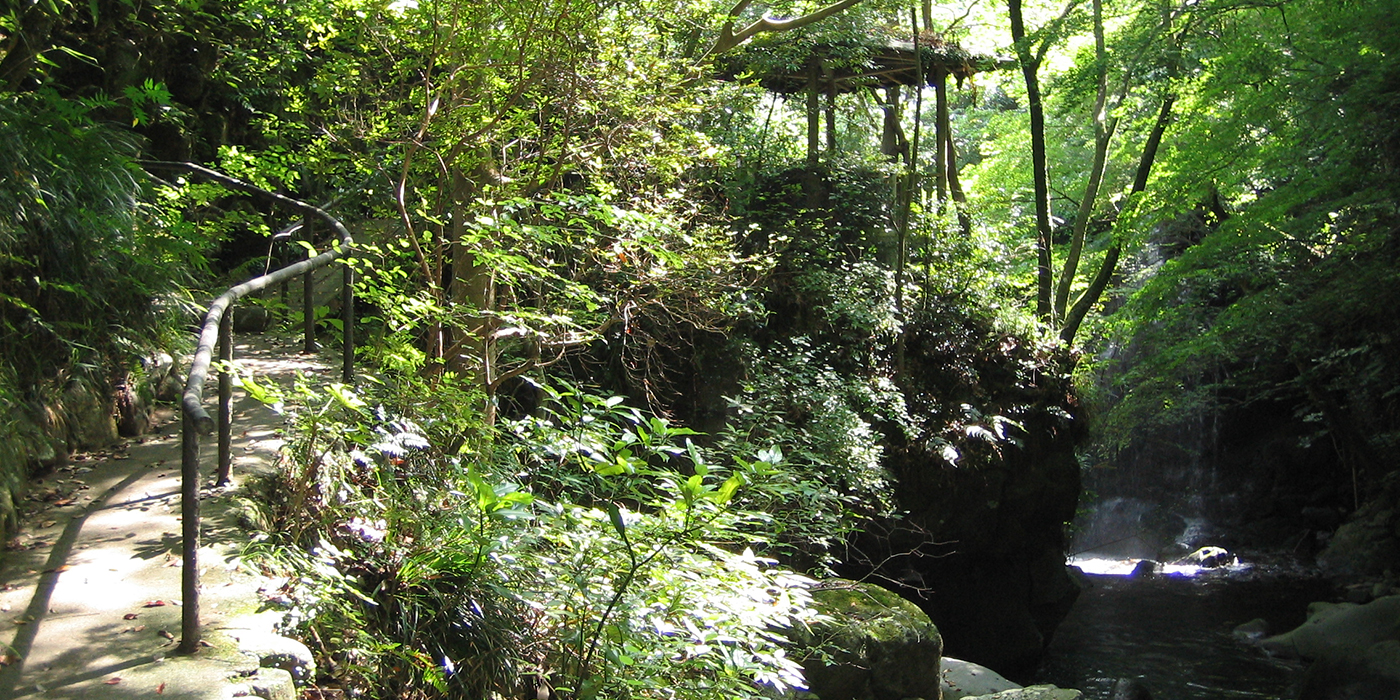
Seasons
Spring
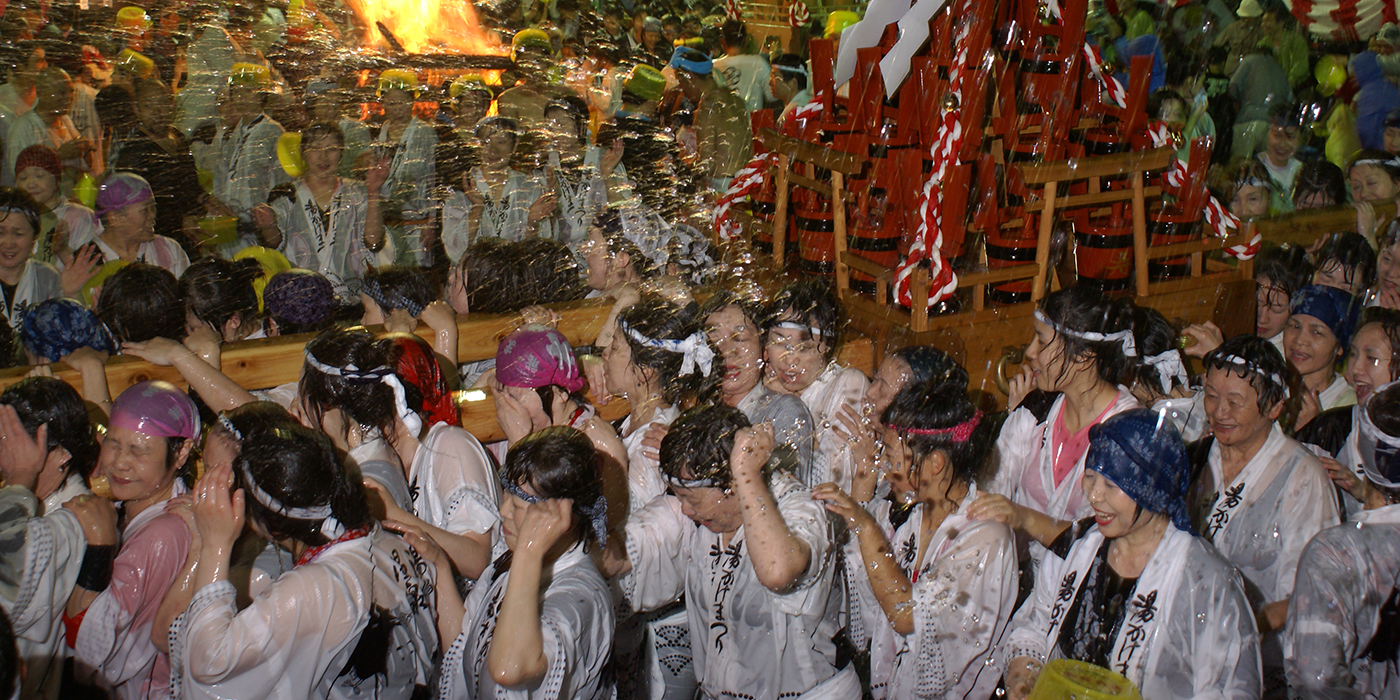
Spring
In February, early spring in Yugawara, ume (Japanese plum) trees bloom in ume groves blanketing Yugawara’s hills. In April, cherry blossoms flourish all over town. In May, Satsuki azaleas turn the whole of Hoshinoyama Park into a brilliantly-colored landscape. During this beautiful season, Yugawara bustles with tourists visiting the town to take in the floral spectacle.
As well in May, large crowds of local residents and even tourists join in the excitement of the grand festival of Yukake-Matsuri, during which portable shrines are carried and doused with hot spring water.
Click for more Spring Event informationSummer
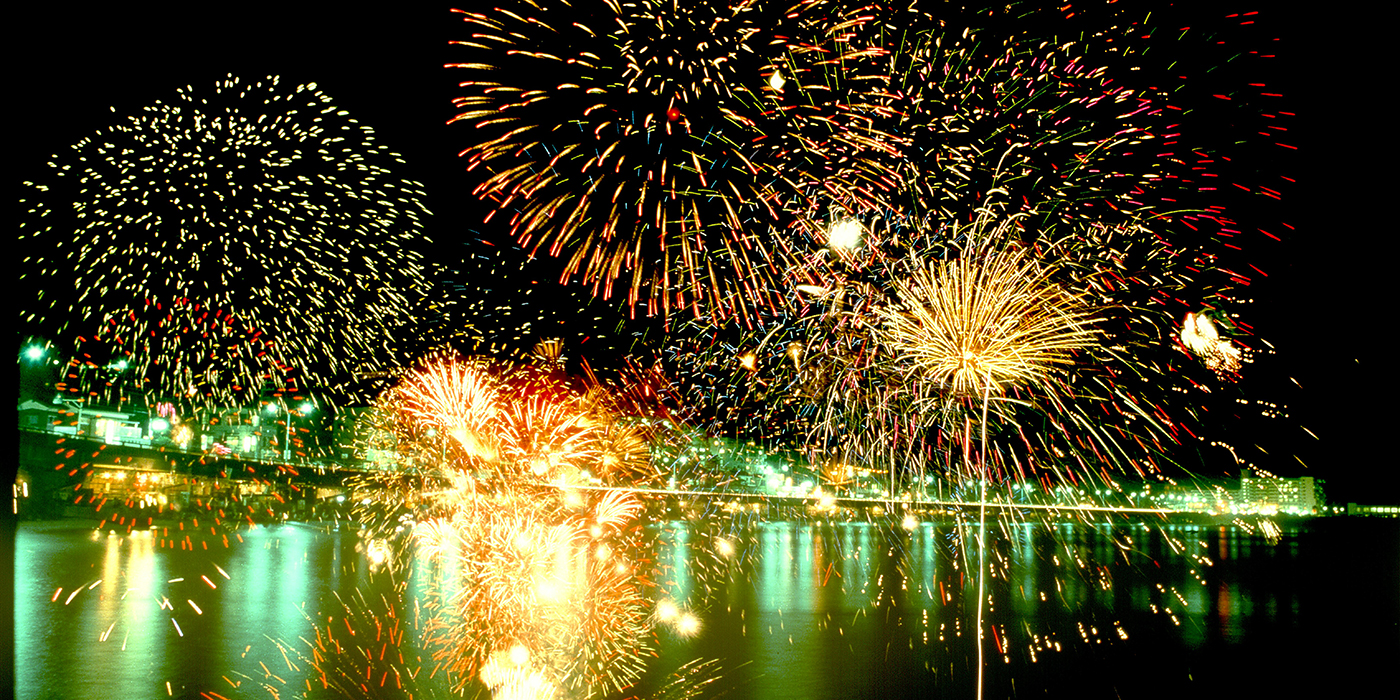
Summer
With the arrival of summer in June, Yugawara is dotted by the enchanting glow of fireflies, which naturally populate the rivers and hills of the town.
In July, many tourists throng to the beaches to swim in the ocean and escape the severe heat in more urban areas.
And, it wouldn’t be a Japanese summer without fireworks, which are launched from the sea in a display unique to Yugawara. The dazzling illumination simultaneously soars high above you and is reflected in the water's surface below.
Autumn
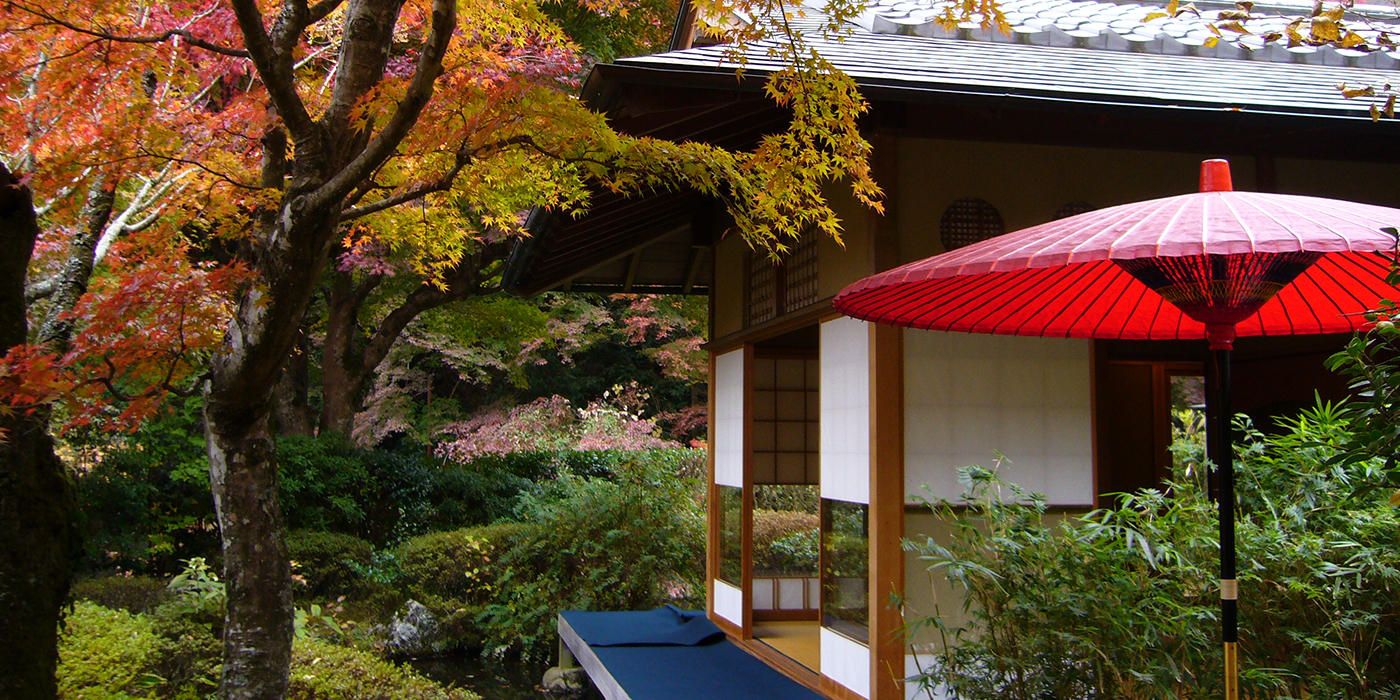
Autumn
As autumn approaches, an October event of colorful bamboo lanterns creates a traditional Japanese atmosphere for onlookers to appreciate. From mid to late October is the season of mikan, one of Yugawara's specialties, and you can go mikan picking in an orchard. In November, leaves throughout Yugawara begin turning brilliant autumnal tones of red, yellow, and orange, presenting a splendid harmony of colors.
You can quietly contemplate the elegance of autumn, along with the traditional atmosphere of a tea ceremony house at Momijo no Sato, and bask in the display of fall colors just by walking along the back roads of Oku-Yugawara.
Click for more Autumn Event informationWinter
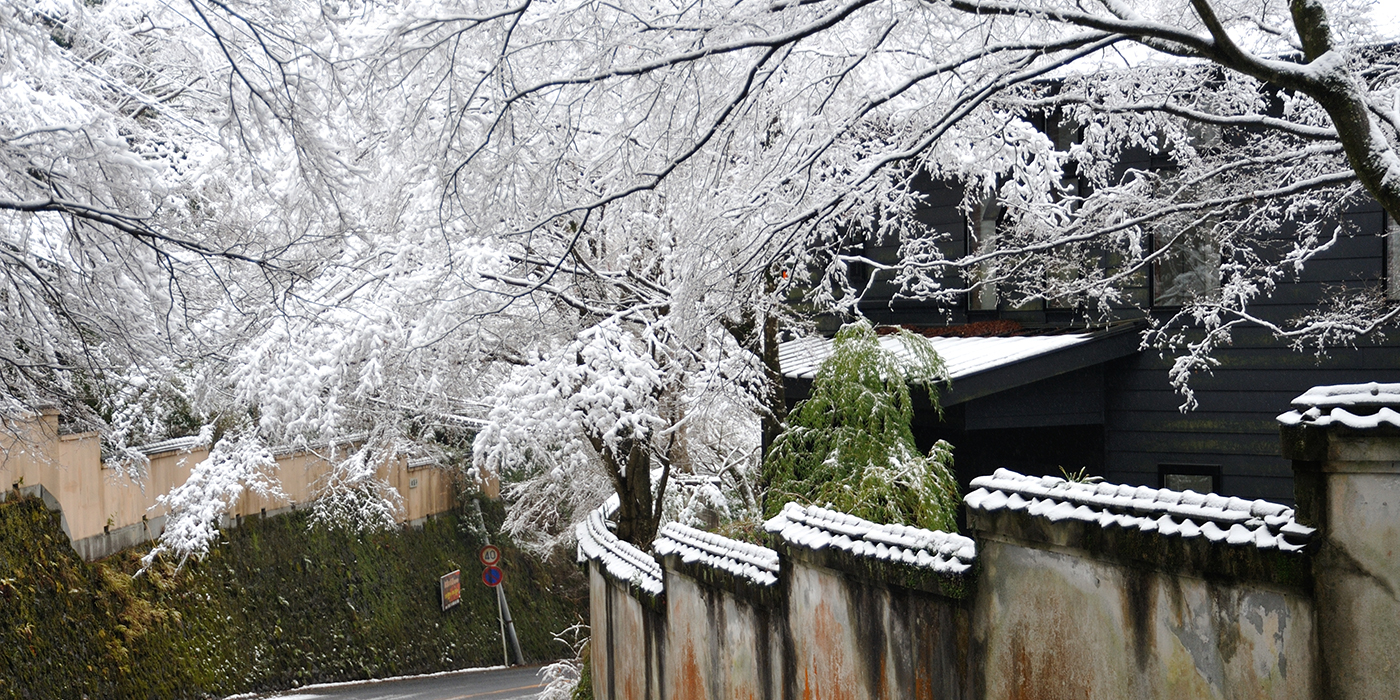
Winter
In winter, dancing white snow falls in Yugawara and turns the area into a beautiful snowscape.
Hot springs are especially popular at this time of the year, and large numbers of people visit Yugawara to soak in the onsen waters and warm up their bodies from the bone-chilling temperatures.
If you dare to try taking an open-air hot spring bath during this cold season, it will be interesting to feel the unique sensation of the cold and warmth simultaneously!
And if you are lucky enough, you may even be able to watch snow falling as you soak in an outdoor bath. This way of bathing is treasured by Japanese people as an exquisite luxury.
Onsen (Hot Springs)
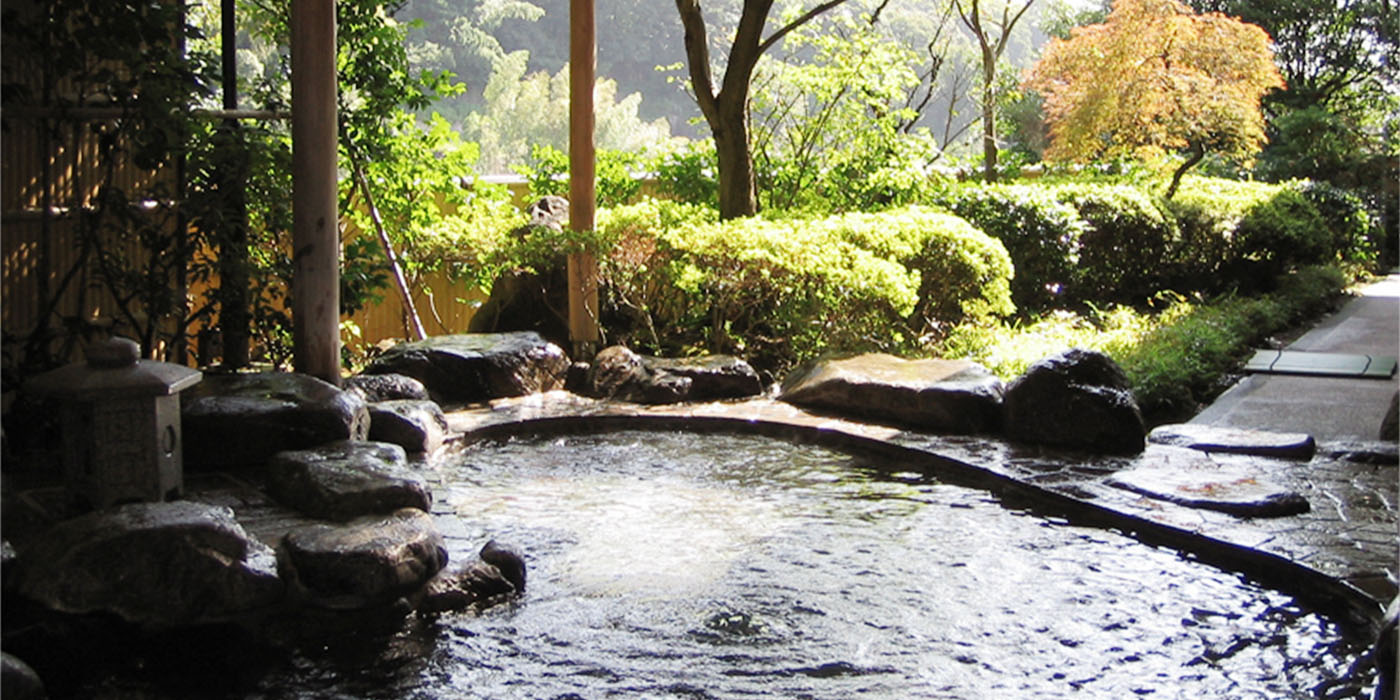
1,250 years of Yugawara Onsen history
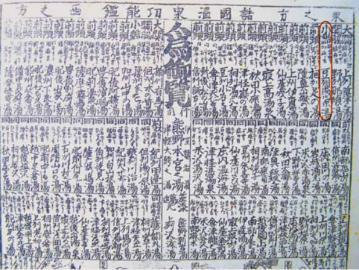
Onsen Banzuke in the Edo era, in which Yugawara Onsen was graded
Since the hot springs in Yugawara are mentioned in the Manyoshu, Japan’s oldest anthology of waka poems, it is believed that they were already in use from the Nara era and during the following Heian era (794 ~ 1185).
Moreover, these onsen waters were recognized as being very valuable because of their effectiveness in healing the wounds that warriors had suffered in battles.
Later, in the Edo era when onsen trips became widespread, an onsen banzuke (ranking list) was created by taking inspiration from a sumo banzuke. In it, hot spring resorts throughout Japan were assigned to Eastern and Western divisions and then graded. At that time, Yugawara Onsen was ranked as the East's third-best onsen resort.
Through such evidence, it is clear that Yugawara has garnered high acclaim as an onsen resort among Japanese people throughout the ages.
The benefits of Yugawara Onsen
Yugawara's onsen waters are effective in warming you to the core, and keeping you from becoming cold as easily. They also feature exceptional heat-retention that sustains the warmth and efficacy of the waters themselves.
Since Yugawara Onsen contains a moderate amount of weak common salt, the waters cause little irritation and feel smooth and pleasant on the skin.
Furthermore, since it contains gypsum, it has been known to promote hastened recovery from bruises, cuts, and after medical operations. This gypsum spring is often referred to as "the spa water for injuries."
It is recorded in historical documents from the Edo era that "The onsen water’s effects...are particularly potent against a broad range of bodily pains."
Yugawara Onsen was also designated as a region for treatment and recuperation for people wounded during the Sino-Japanese and Russo-Japanese Wars in the Meiji era.
Since calcium ions contained in gypsum have a sedative effect, the onsen waters are relaxing for both body and mind.
Moreover, gypsum makes the skin soft and flexible, and sulfate ions strengthen the elastic fibers of the dermis and prevent wrinkles, so you can look forward to such spa-like treatment effects as well.
The waters also act similarly to soap in removing old keratin from the skin.
How to take an onsen bath
Step 1: Wash yourself.

Be sure to clean your whole body before entering the bathtub.
To do so, sit on a stool in the washing area, and use the available showers to wash yourself thoroughly with shampoo and liquid soap.
Step 2: Kakeyu
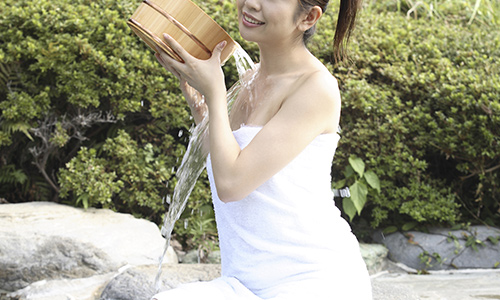
Kakeyu refers to scooping water from the hot spring bath with a container, and pouring it over your body to acclimate yourself to the temperature before entering the bath. Start by pouring hot spring water on your feet, and gradually move towards the upper part of your body.
Step 3: Enter the bath.
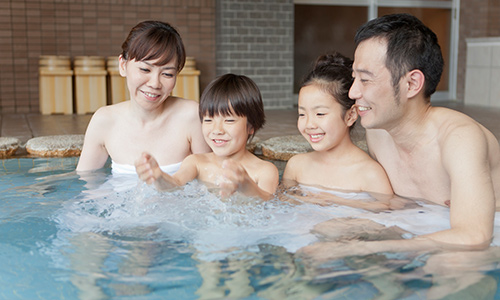
Gradually enter the bath.
While bathing, it feels pleasant to put a cold towel on your head, and it can help prevent you from feeling dizzy if you bathe for too long.
Step 4: Exit the bath.
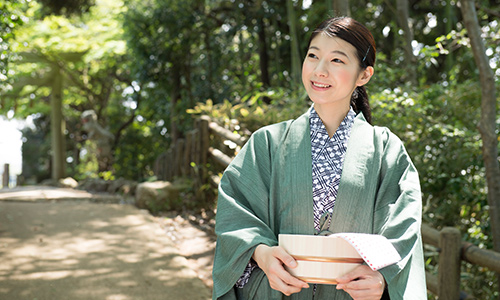
Don’t shower again after exiting the bath, in order to prolong the effects of the onsen.
Dos and don'ts of onsen bathing
- ① Never bathe in a hot spring after drinking alcohol. It might cause dizziness or a headache, and in some cases it might cause you to faint.
- ② Even if the onsen water feels too hot, don't attempt to cool it down with cold water.
- ③ Don't put your towel into the bath water.
- ④ If you have long hair, please tie your hair up in a bun or towel so that it will not get into the bath water.
- ⑤ Bathing with swimwear on is generally not allowed unless noted.
- ⑥ Hydrate yourself properly after taking a bath.
- ⑦ At many hotels and inns, people with tattoos are not allowed to enter the bathing facilities due to cultural stigmas. Please check with your lodging in advance.
Types of onsen facilities
Ashiyu
Yugawara town has some ashiyu (footbath) facilities, where you soak only your feet in onsen water. Sitting and soothing your feet in hot spring water feels great, of course! But in Yugawara’s ashiyu facilities, the bottom of the footbath is textured to stimulate pressure points on your feet, so it is recommended to walk in the ashiyu water and experience this massaging effect as well.
You can try it for yourself at various places in Yugawara. There are also some ryokan (Japanese-style inns) which have ashiyu facilities for you to heal your fatigue with.
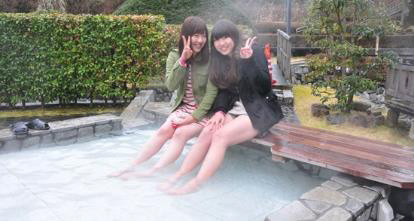
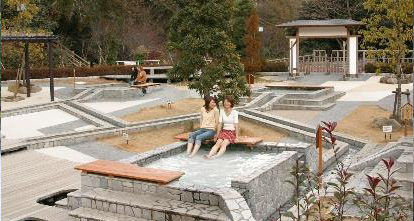
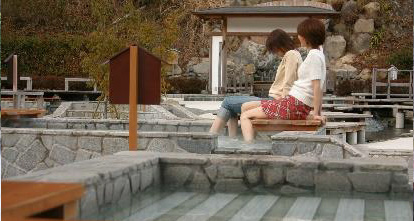
Guest room with an open-air bath
Some ryokan in Japan have guest rooms with attached, open-air hot spring baths.
Generally, hot springs in Japan are a public experience, with many people using them simultaneously. However, if an open-air bath is attached to your guest room, you can take a very leisurely, luxurious onsen bath in your own private space.
Naturally, the accommodation charges are higher for such rooms, but it is sure to provide a relaxing and memorable experience.
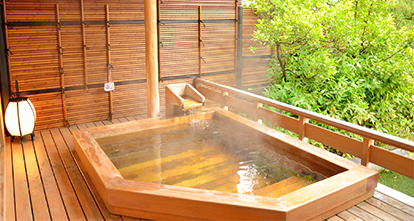
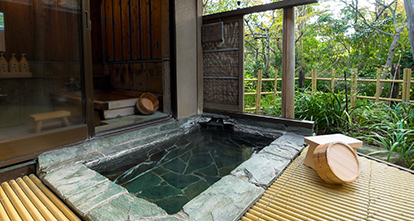
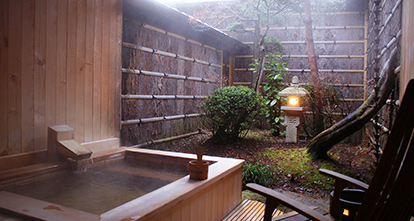
Ryokan ( Japanese-style Inn )
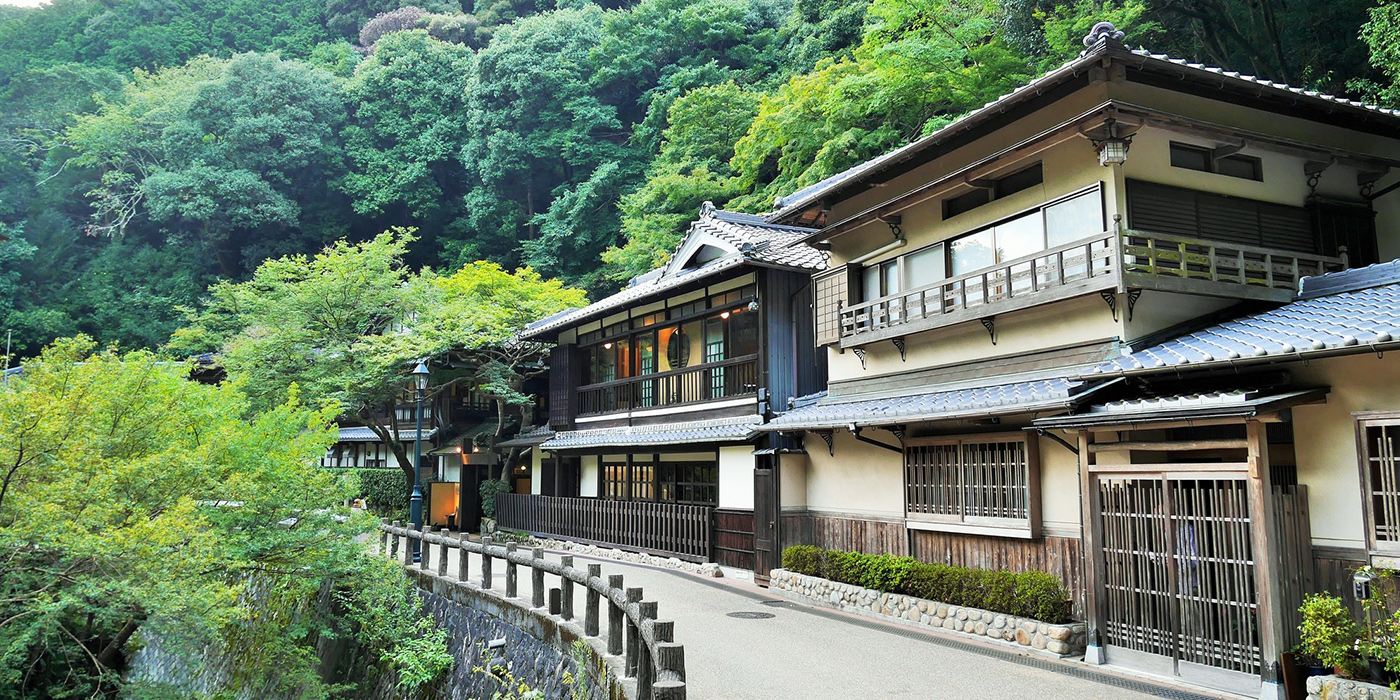
A ryokan is an inn-like lodging accommodation with a traditional Japanese building structure and equipment. Japanese concierge services ("omotenashi") offered at a ryokan will enable you to experience traditional Japanese culture and hospitality.
Guest rooms are Japanese-style rooms, and some ryokan even have rooms with an onsen or an open-air bath attached.
If your reservation includes dinner, you can feast on Japanese dishes, or a traditional Japanese "kaiseki" multi-course meal, within the comfort of your accommodations.
If your reservation does not include meals, this allows you the freedom to visit a restaurant of your choosing around your inn, at your leisure.
Check in & check out
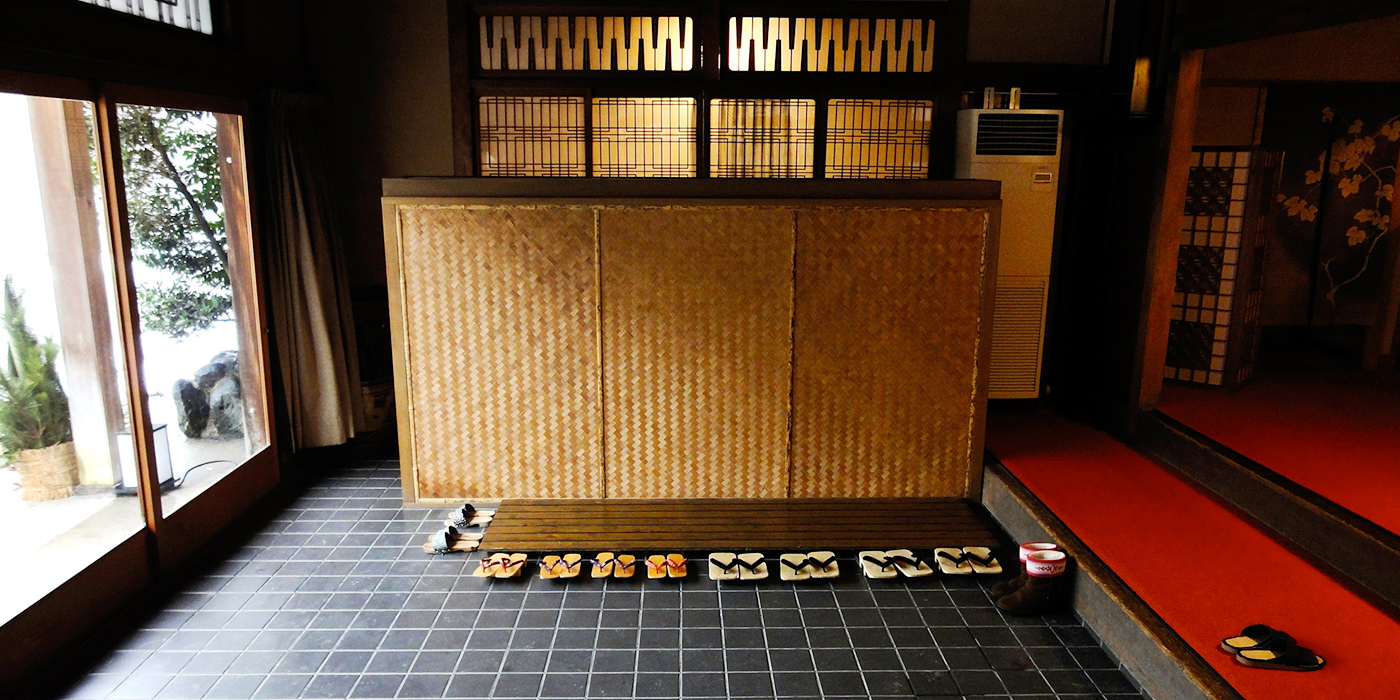
About check-in
Check-in times vary from ryokan to ryokan, but you can generally check in starting at 3:00 p.m. at most places.
If your reservation includes dinner, many establishments' dining hours begin at 6:00 or 7:00 p.m., so please allow yourself enough time to arrive at least one hour in advance. If you are going to be late, please contact your ryokan.
At most ryokans, when you check in at the front desk you will be asked to provide your passport, so please make sure to have it ready if you are not a resident in Japan. If you do have Japanese residency, showing other photo ID or writing your address in Japan should suffice.
After that, your method of payment and charges will be confirmed. If the payment has already been made via online or other methods, the staff will show you to your room after confirmation is made.
Arrival at your ryokan
When you arrive at your ryokan , the staff will usually come to greet you at the entrance.
If by chance no one seems to be there, just call out "Gomen-kudasai!" ("Excuse me!"), and someone will surely come to assist you promptly.
Since wearing shoes inside a ryokan generally isn't allowed, if slippers are prepared at the entrance, please take off your shoes and change to the slippers before going to your room. Usually there will be either storage lockers in which to store your shoes during your stay, or there will be plastic bags available to put your shoes in and take them to your room with you.
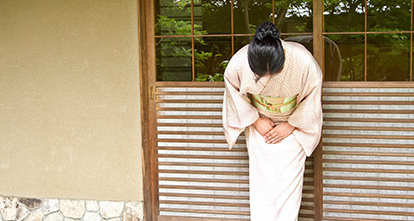
Step 1:The staff will come to greet you.
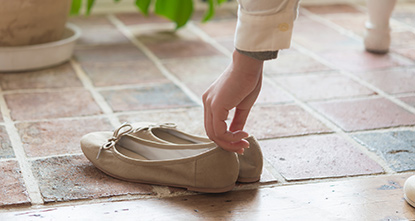
Step 2:Take off your shoes at the entrance.
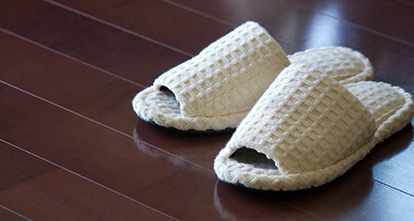
Step 3:Wear the slippers provided.
About checkout
Checkout times can vary depending on the ryokan as well, but checkout is generally at 10:00 am. Some establishments may allow you to check out as late as 12:00 p.m., but please confirm the checkout time with your ryokan beforehand if you are unsure.
Accordingly, breakfast will usually be served between 7:30 and 9:30 a.m. Be sure to confirm the time and place.
If you let the front desk know your planned checkout time in advance, you can receive assistance with carrying your luggage from your room.
After making sure to not forget any personal belongings in your room, leave the room and return your key at the front desk. You can finish checking out after settling any remaining charges and completing your payment.
Rooms
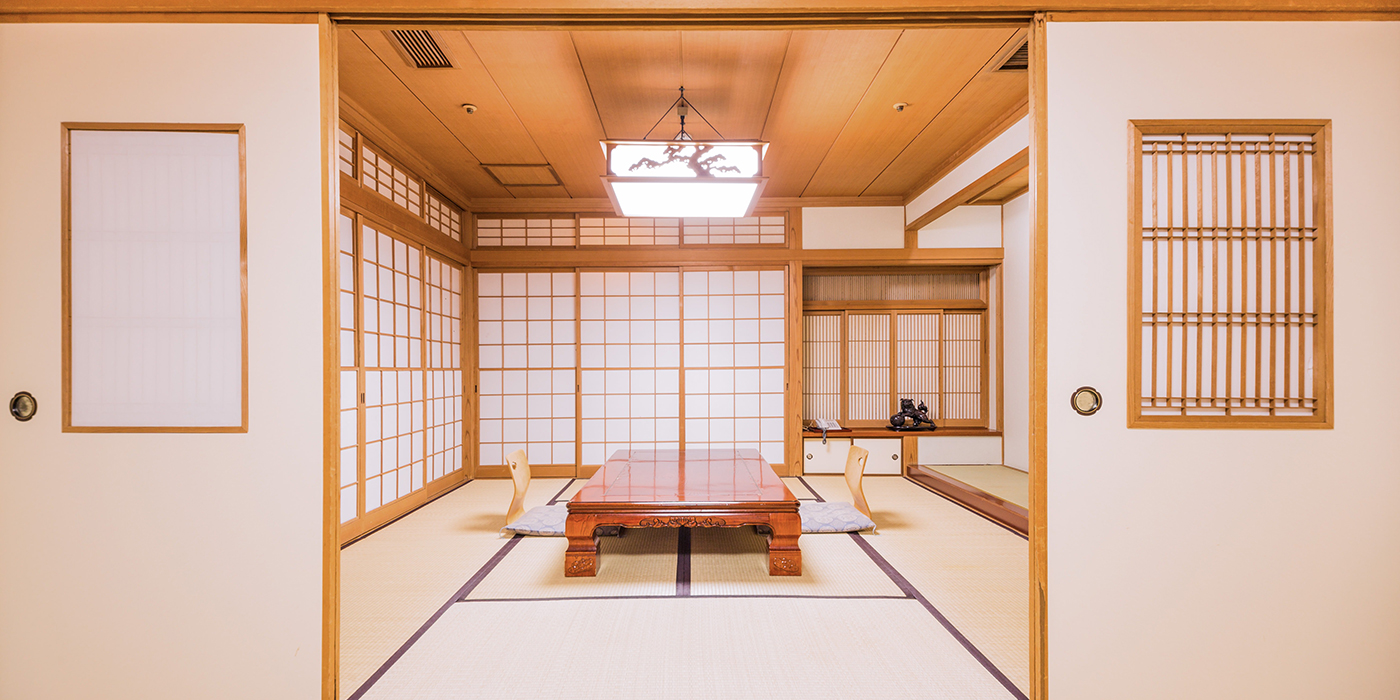
About guest rooms
There may be some differences depending on the structural design or price range, but most ryokan have the following points in common.
- ① The rooms are Japanese-style with tatami mats
- ② As a "welcome gift" from the inn, Japanese sweets are placed on the table in your room before you arrive.
- ③ You can help yourself to tea by making it with the hot water pot, teapot, and container of tea leaves on the table.
- ④ You can find bedding (futon, sheets, and pillows) in the closet, although this will usually be prepared for you by the ryokan staff, often while you are eating dinner, so don't be concerned with setting it out yourself.
- ⑤ Amenities, such as toothbrushes and towels, and sometimes yukata robes (if there is not a "yukata corner" by the front desk or in the lobby), can be found in the closet as well. Please feel free to use them.
- ⑥ Most toilets are Western-style, but some may be Japanese-style.
Some guest rooms are equipped with private open-air baths, for an additional charge.
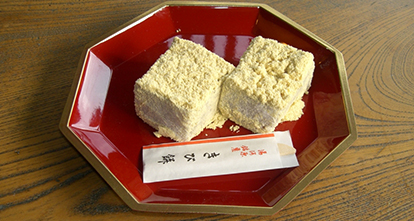
Help yourself to welcoming gifts from the ryokan, such as Japanese sweets and cookies.
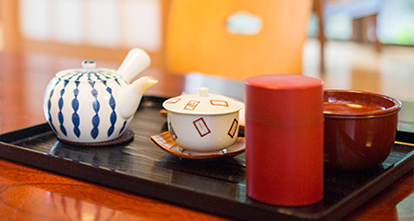
You can brew warm green tea by putting some tea leaves from a container into the teapot, and pouring hot water over them to steep.
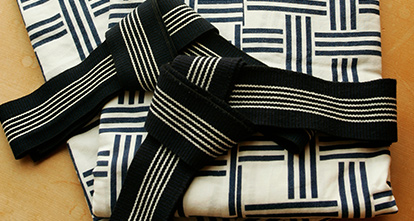
Yukata robes and a sash are either provided for you in your room, or available from shelves in a “yukata corner” near the front desk. There are often different colors to choose from. If you need a different size, please inform the front desk and they will assist you.
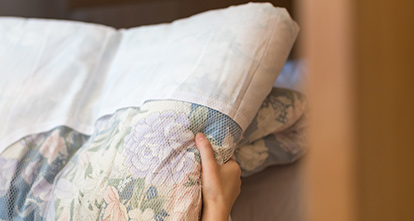
You can set up your futon yourself...
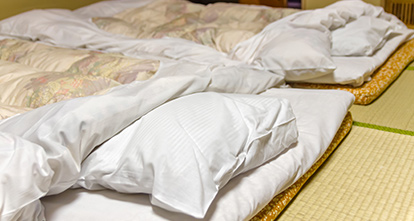
...but you'll usually find it already prepared by the ryokan staff when you return to your room after dinner.
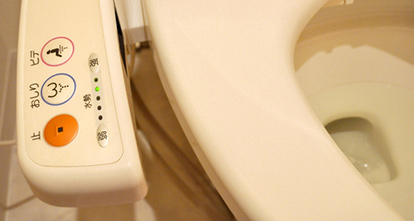
Western-style toilet in a guest room.
Cuisine
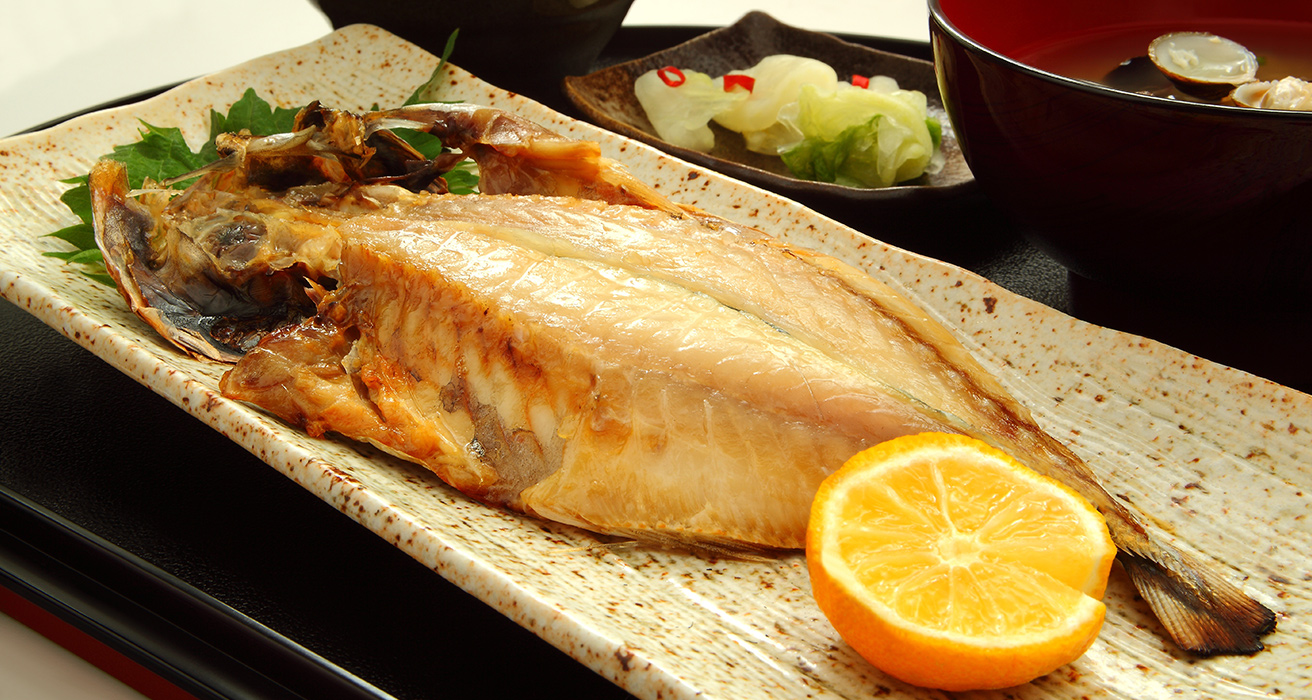
Dishes served at a ryokan
Japanese cuisine ("washoku") was added to UNESCO's Representative List of the Intangible Cultural Heritage of Humanity in 2013. The merits of its addition include being "associated with an essential spirit of respect for nature that is closely related to the sustainable use of natural resources."
At Yugawara's ryokans, you can dine on authentic "washoku" dishes prepared by first-class chefs with refined skills, using fresh, seasonal local ingredients. The range of delectable possibilities includes sashimi and sushi made with fresh seafood, tempura and hot-pot dishes containing seasonal vegetables and edible wild plants, and kaiseki multi-course meals which offer combinations of various traditional Japanese dishes, all unique to each ryokan.
Breakfast
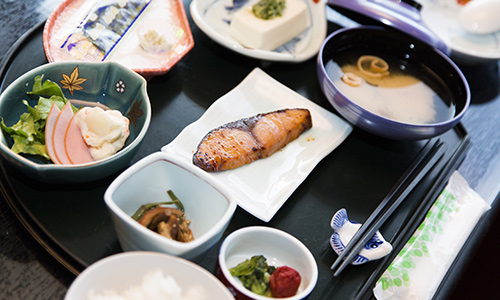
At a ryokan, you can start your day off perfectly with a delicious, satisfying classic Japanese-style breakfast. A typical example might include rice, miso soup, a soft-boiled (also called "onsen") egg, small dried fishes, a larger piece of grilled fish (often salmon or horse mackerel), Japanese pickles, and hot green tea.
※Breakfast inclusions vary from ryokan to ryokan.
Dinner
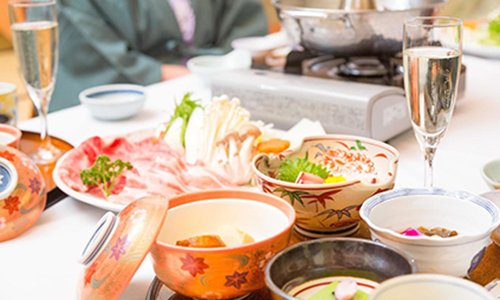
For dinner, traditional Japanese dishes such as tempura and sashimi are served as part of a kaiseki multi-course meal, and ample variety means seemingly no two combinations of dishes are the same.
Only fresh ingredients are used for each dish, and their delicate, nuanced flavors are complemented well by their beautiful appearance and presentation, creating a dining experience to be savored and not soon forgotten.
Because Yugawara is located between mountains and the ocean waters of Sagami Bay, kaiseki dishes make good use of locally-sourced seafood, and edible wild plants and vegetables. They pair excellently with beer and Japanese sake.
Japanese cuisine frequently served at ryokans
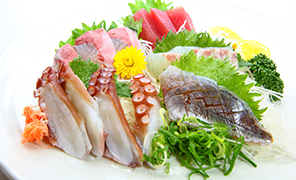
Sashimi
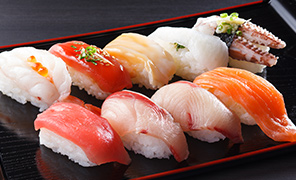
Sushi
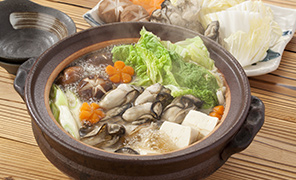
Nabe
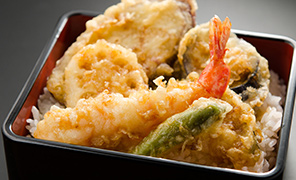
Tempura
Regional cuisine
Yugawara
Mikan orange picking
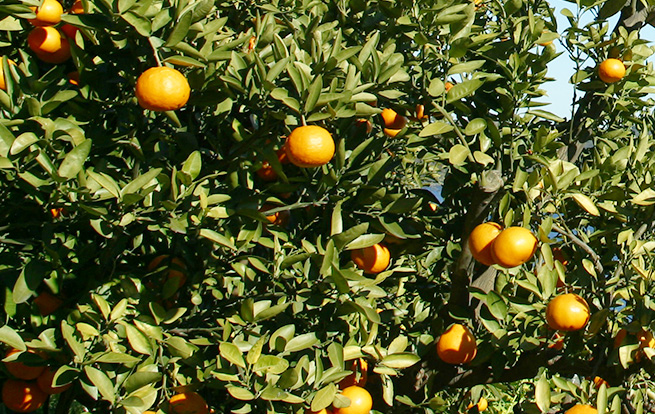
October to December is the season of mikan, one of Yugawara's specialties. The secrets to the deliciousness of Yugawara’s mikan are sunny hillsides and the warm sea. In order to grow sweet mikan, plenty of sunshine and a warm climate are key. Please savor the taste of freshly-picked mikan to your heart's content.
Kibimochi
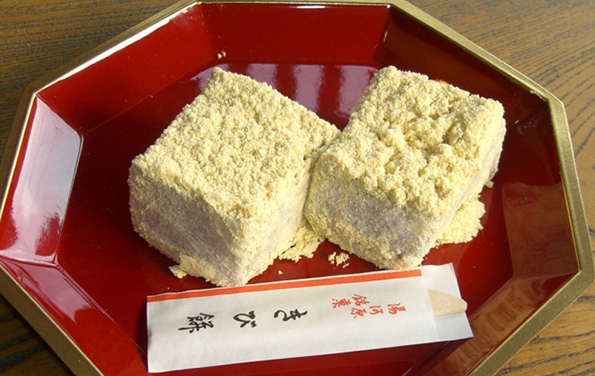
Kibimochi is a rice cake made from millet and rice flour, then coated with soybean flour. Its soft and elegant sweetness will evoke a feeling of days long past. It is one of Yugawara's local specialties. At many ryokan, kibimochi is served as one of the welcome services for their guests.
Odawara
Odawara oden (stewed fish cakes and other ingredients)
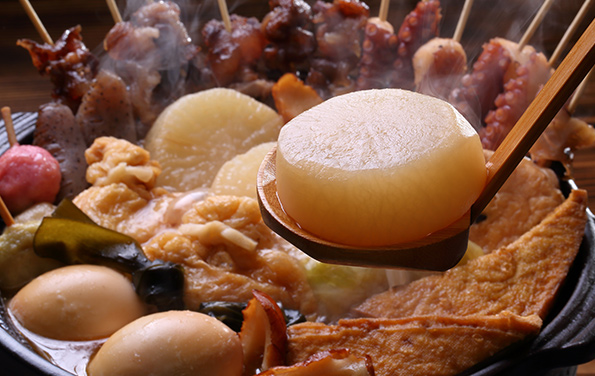
Odawara is known as one of the original cities in Japan to offer fish cake and fish paste products, such as "kamaboko," which has since become one of Odawara's specialties.
Odawara oden is known for making particularly good use of whitefish paste foods, like kamaboko and other local creations, in its stew pot of various ingredients.
Instead of mustard as a common oden condiment, "umemiso," another one of Odawara's specialties that is a mixture of miso and pasted ume (Japanese plums), is used instead and lends the dish a flavor unique to the area.
Kamaboko (steamed fish cake)
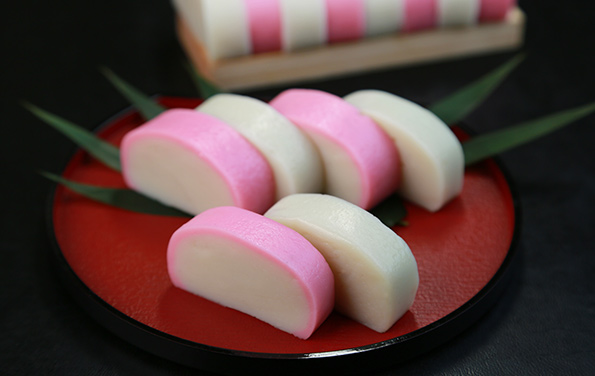
Odawara, in addition to being a castle town during the Edo period which controlled strategic points on the Tokaido road between Kyoto and Edo (modern-day Tokyo), is also a port town that boasts abundant harvests of fish.
Kamaboko, made from the various whitefish caught there and using high-quality water from the Hakone water system, has achieved national prevalence. It is served in a wide variety of dishes and styles, including in Odawara oden.
Hakone
Owakudani black eggs
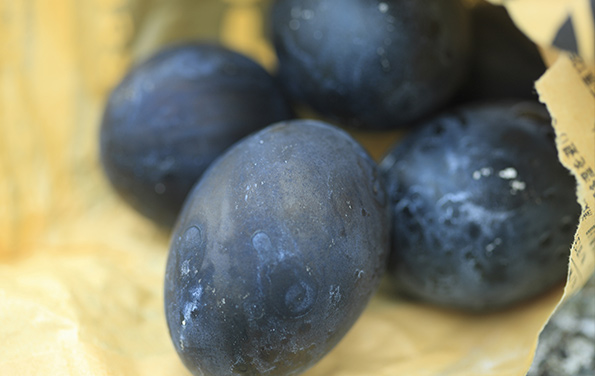
Owakudani is an active volcanic valley in Hakone that is sometimes affectionately referred to by the locals as "Jigokudani," meaning "Hell Valley," an appropriate name given the steam and sulfur venting from the earth. Boiling eggs in the iron-rich onsen waters of this valley creates a reaction with hydrogen sulfide, giving the eggshells a distinctive swirled-black coloration.
Enmei Jizoson, the guardian deity of longevity and child rearing, is deified in Owakudani. Legends say that you will receive good luck by eating one of these black-shelled eggs, and seven years will be added to your life.
Hakone tororo soba
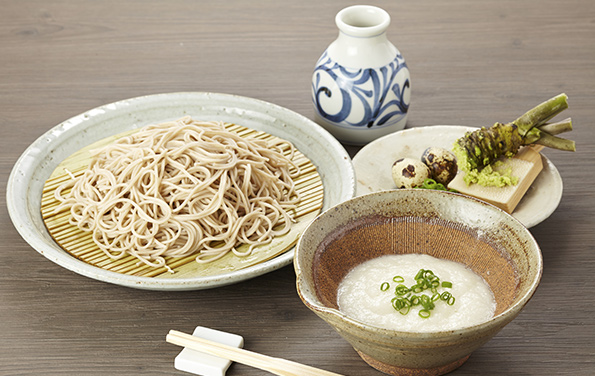
The main feature of Hakone Tororo Soba is grated yam that is added to the buckwheat noodles as a topping.
A type of yam called "Jinenjo" is used for this soba. It is stickier than ordinary Chinese and Japanese yams, which are the kind typically sold in stores.
Jinenjo is also kneaded into the soba noodles as they are made, which bestows upon them a rich, unique flavor and aroma.


